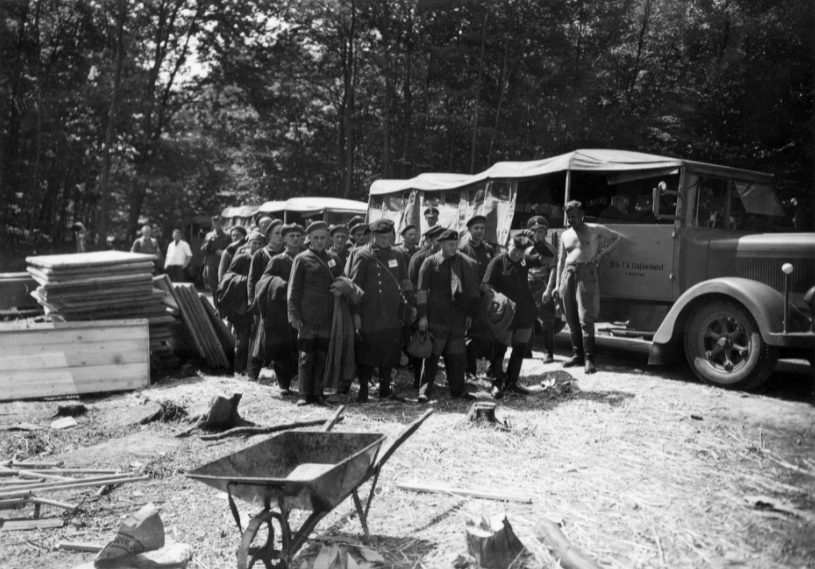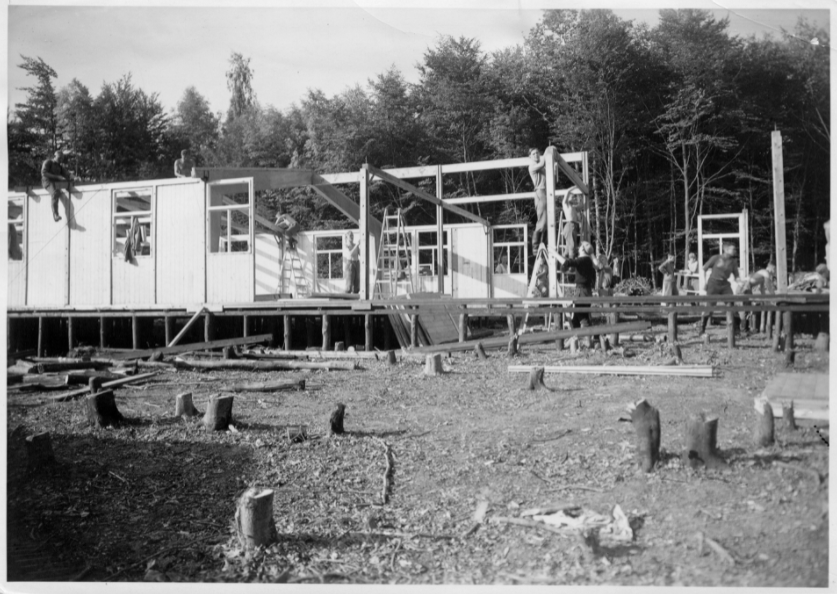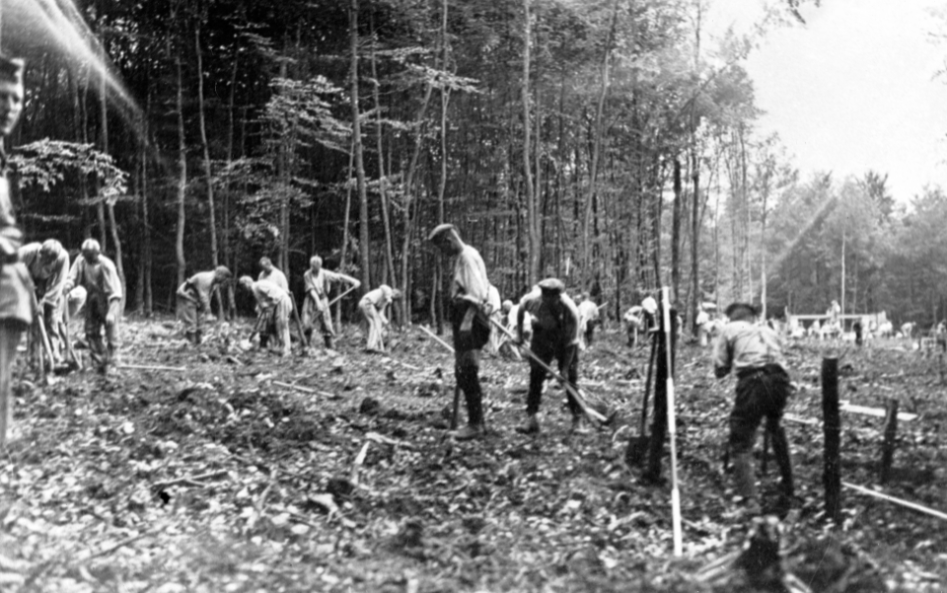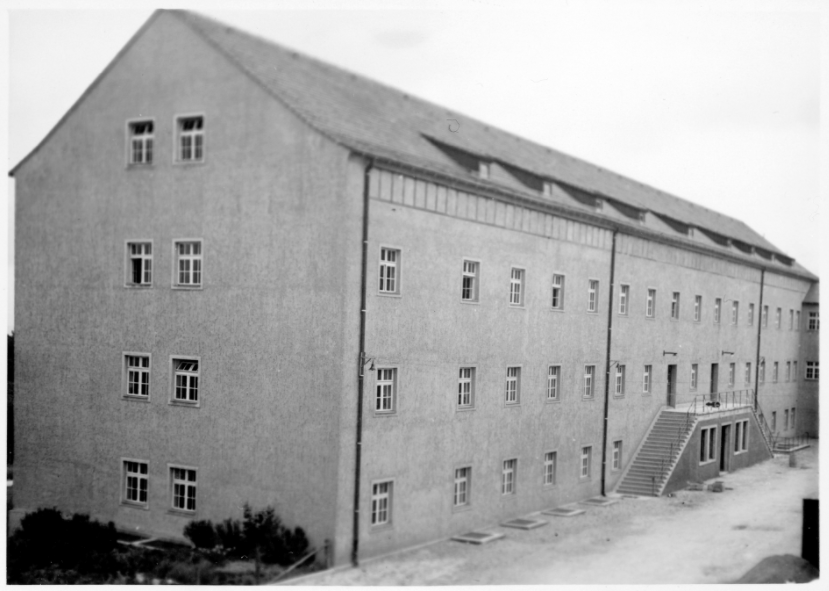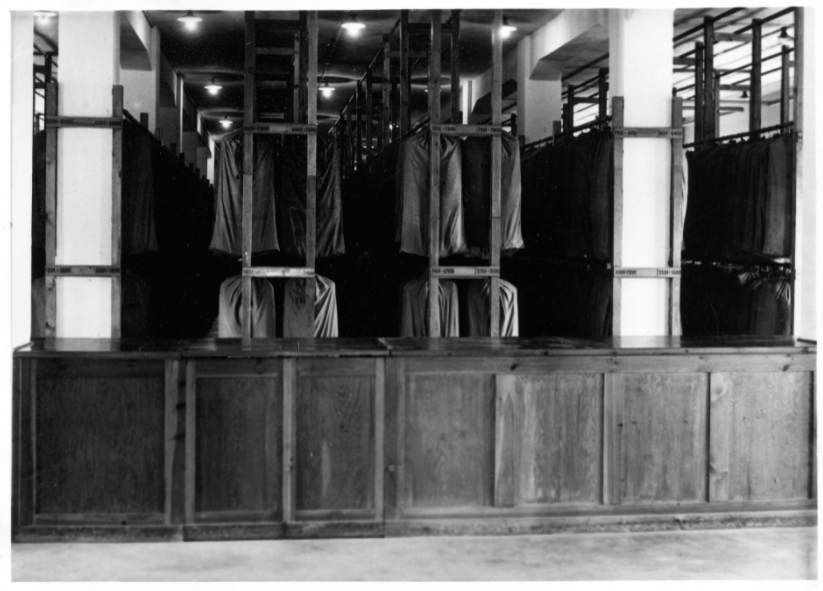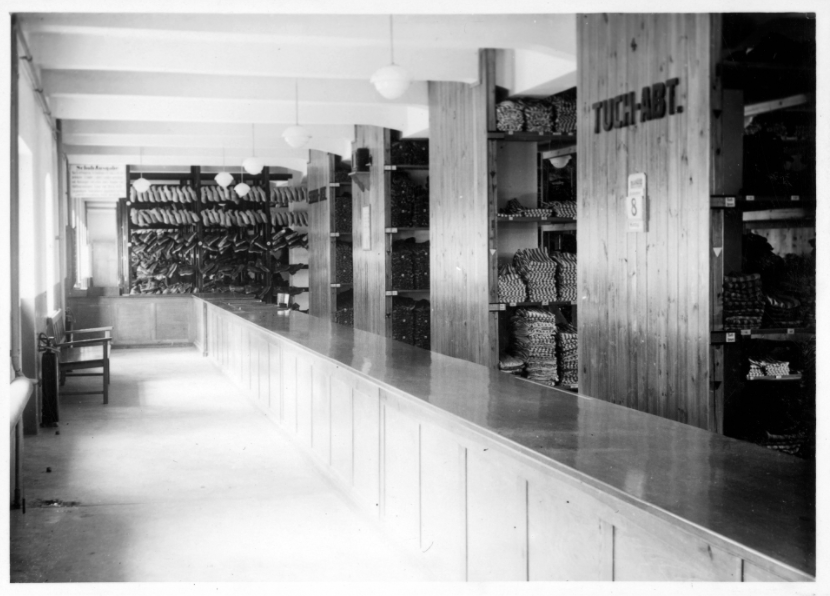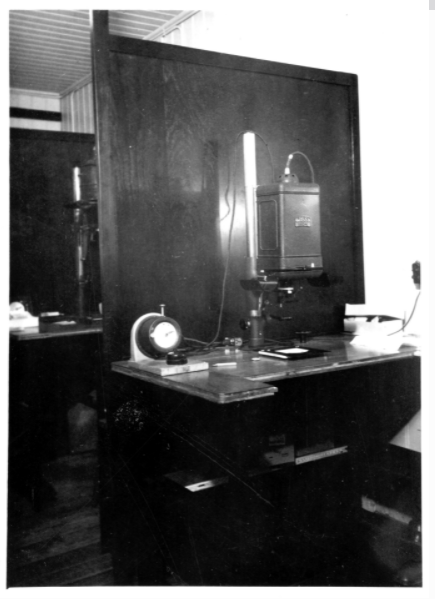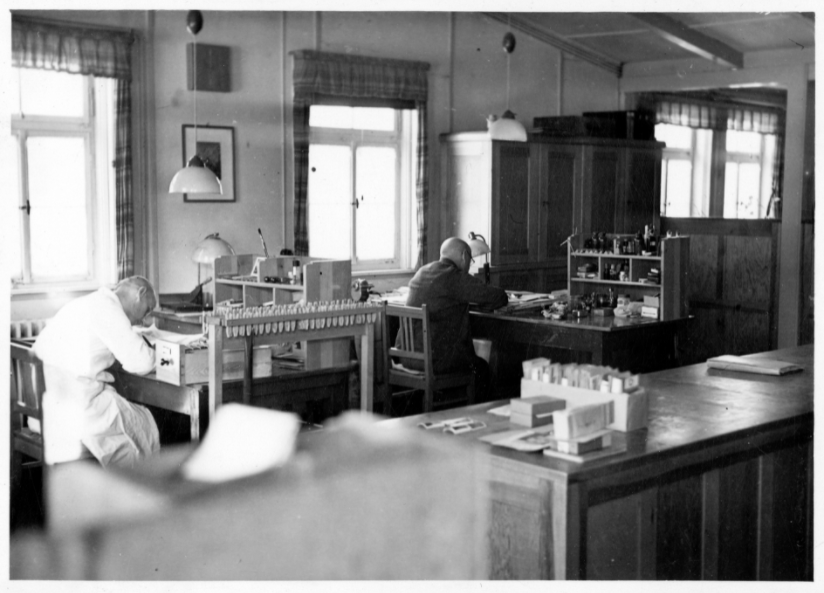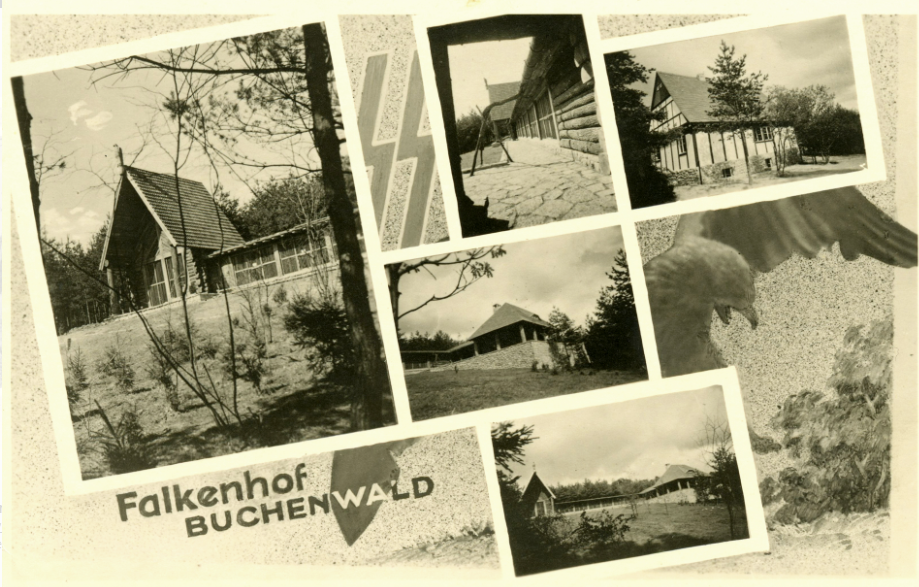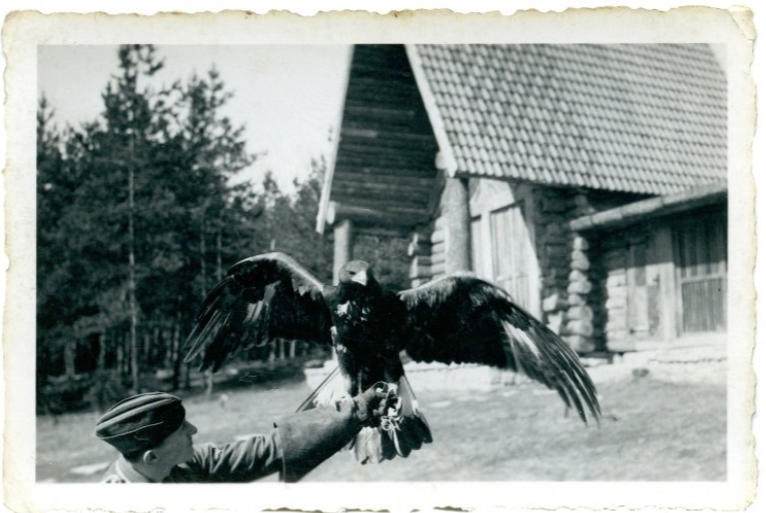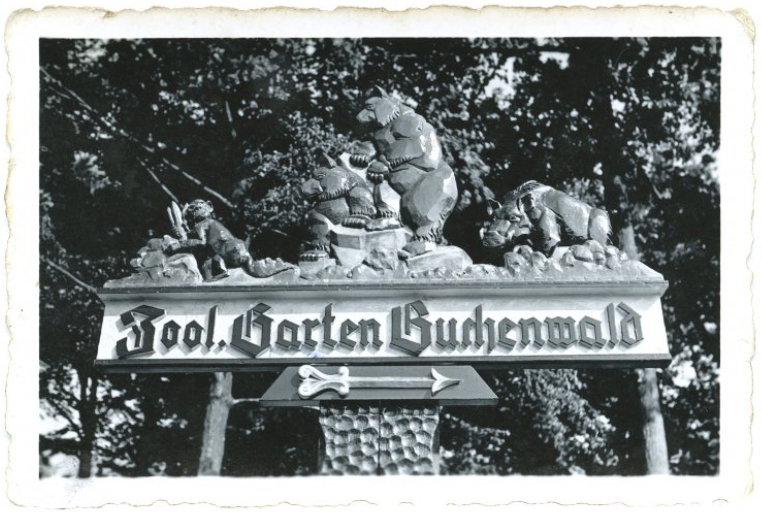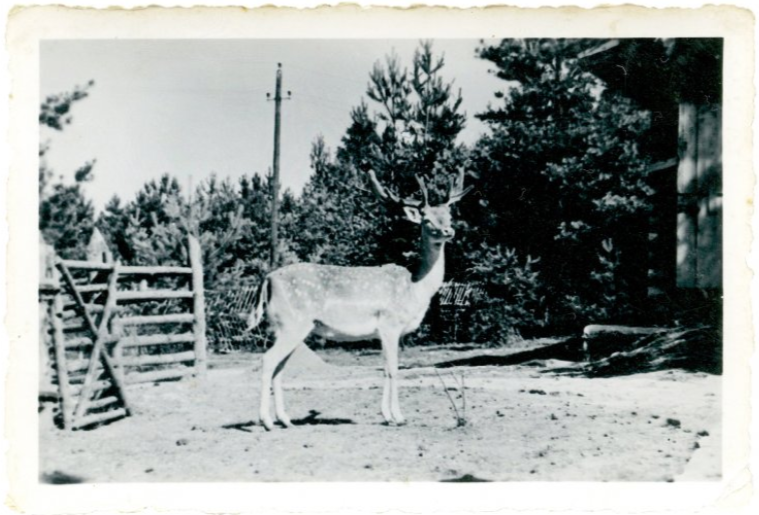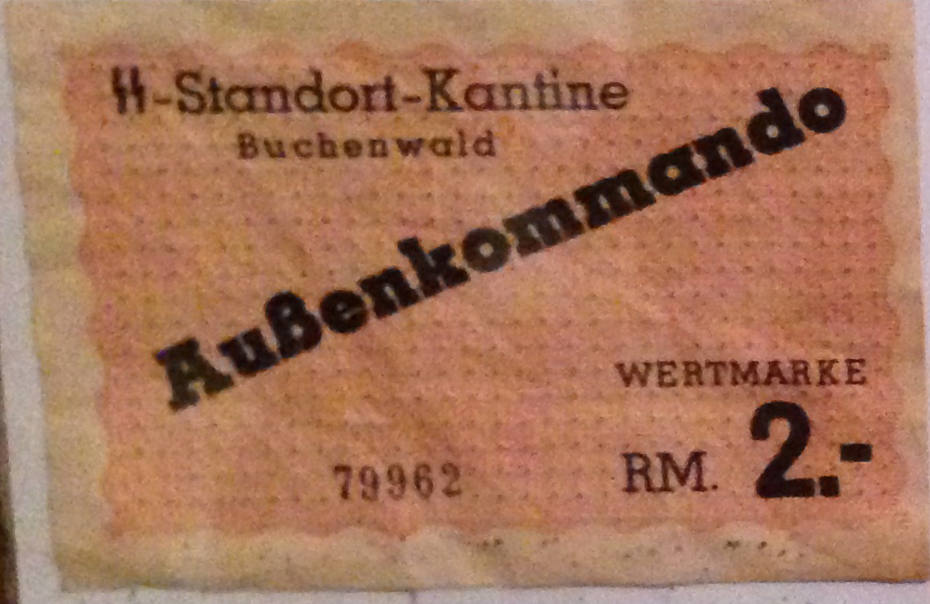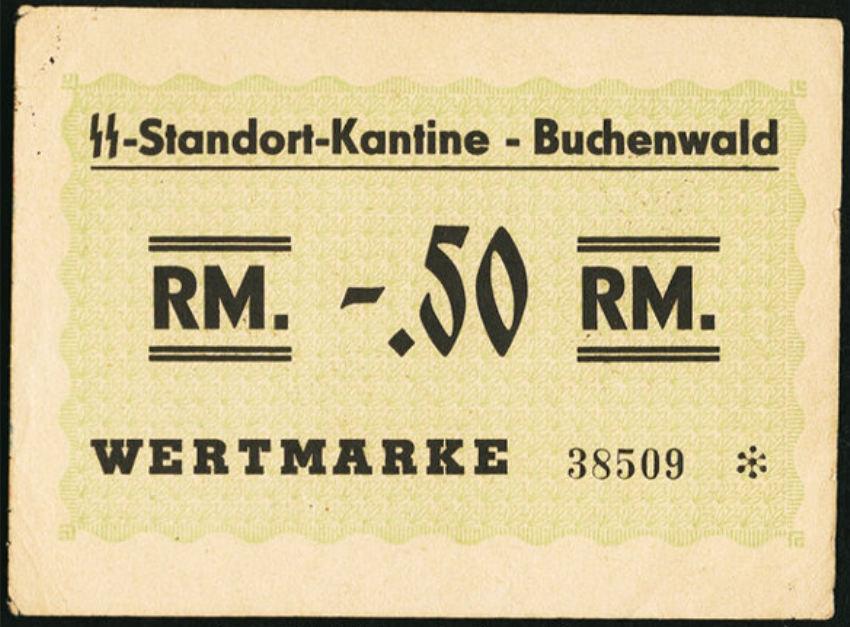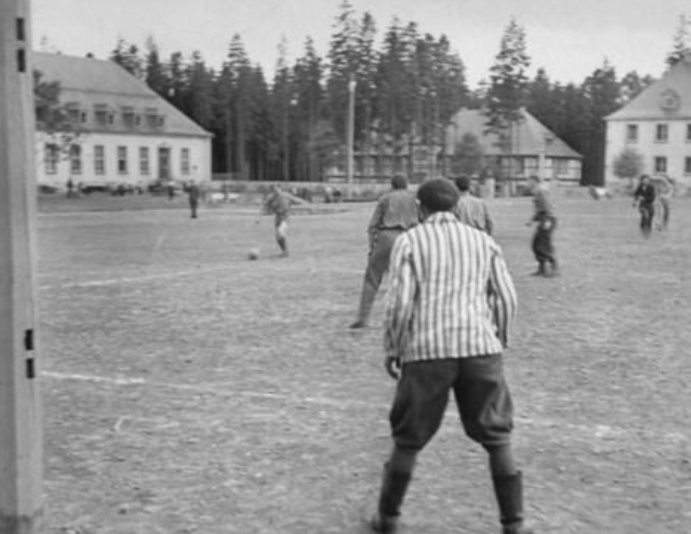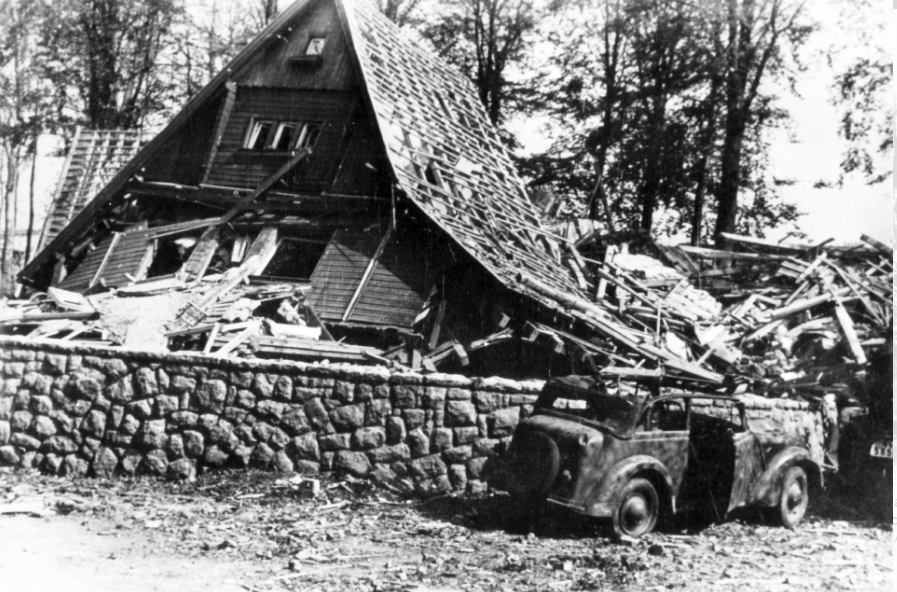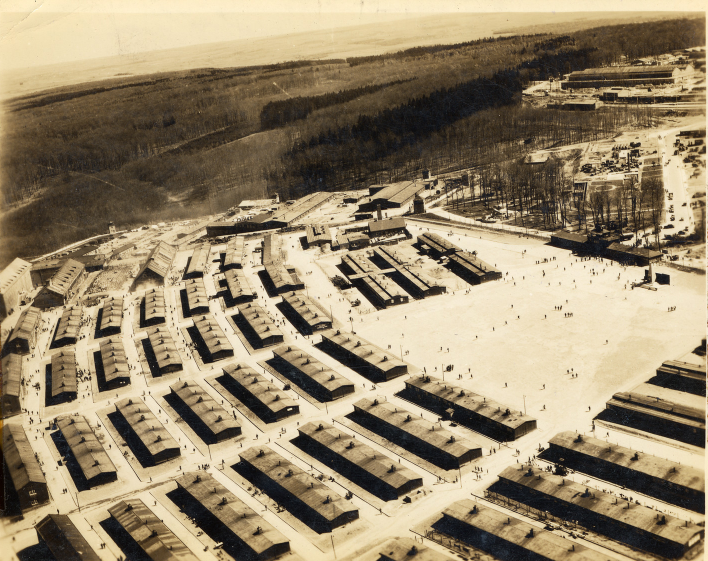
Only in miracles, do torches of revolution appear from crematorium chimneys.
WW2 Propaganda
Flames never rise from crematorium chimneys, so what exactly has been incinerated all this time, truth? Eighty years on, this anti-White propaganda suppresses White people into guilt, shame, and self-loathing and also to annihilate from conceptual thought any trace of a homogenous and ethnocentric homeland; free from usury, debt slavery and crucifying genocidal decimations.
- Forward
- Introduction
- Fabrication
- Concentration Camps
- Auschwitz-Birkenau
- Inflated death toll
- Propaganda Chimney
- Rudolf Höss
- Gas Chambers
- Mass Cremation
- Electrocuted & Vaporised
- Tattoo Machines
- Memorial and Museum
- Treblinka
- Dachau
- Buchenwald
- Publications
- Simon Wiesenthal
- Anne Frank Diaries
- Rudolf Vrba’s “I Cannot Forgive”
- Olga Lengyel’s “Five Chimneys”
- Kitty Hart’s "Return to Auschwitz"
- Martin Gray’s “For Those I Loved”
- Jean Francis Steiner’s “Treblinka”
- Miklos Nyiszli’s “Auschwitz: A Doctor’s Eyewitness Account”
- Filip Müller’s “Eyewitness Auschwitz: Three Years in the Gas Chambers”
- Truthful Survivor Books Not Given Prominence
- Paul Rassinier—The Holocaust Victim Who Argued Against the “Gas Chambers”
- Martin Gilbert’s “Auschwitz and the Allies”
- Herman Rosenblat’s “Angel at the Fence”
- Binjamin Wilkomirski’s “Fragments”
- “Survivor” Swindlers 1—The Philip Auerbach Case
- “Survivor” Swindlers 2—The Werner Nachmann Case
- “Survivor” Swindlers 3—The Semen Domnitser Case
- Nuremburg
- Hollywood
- Truth as a Victim
- Robert Faurisson
- Lady Michèle Renouf
- Richard Williamson
- Ursula Haverbeck
- Germar Rudolf
- Jürgen Graf
- Gerd Honsik
- Wilhelm Stäglich
- Fredrick Töben
- Memorials and Museums
- Albania
- Argentina
- Australia
- Austria
- Belarus
- Belgium
- Brazil
- Bulgaria
- Canada
- China (People's Republic of China)
- Conclusion
Forward
Propaganda is a modern Latin word, the neuter plural gerundive form of propagare, meaning 'to spread' or 'to propagate', thus propaganda means the things which are to be propagated. Originally this word derived from a new administrative body (congregation) of the Catholic Church created in 1622 as part of the Counter-Reformation, called the Congregatio de Propaganda Fide (Congregation for Propagating the Faith), or informally simply Propaganda. Its activity was aimed at "propagating" the Catholic faith in non-Catholic countries.
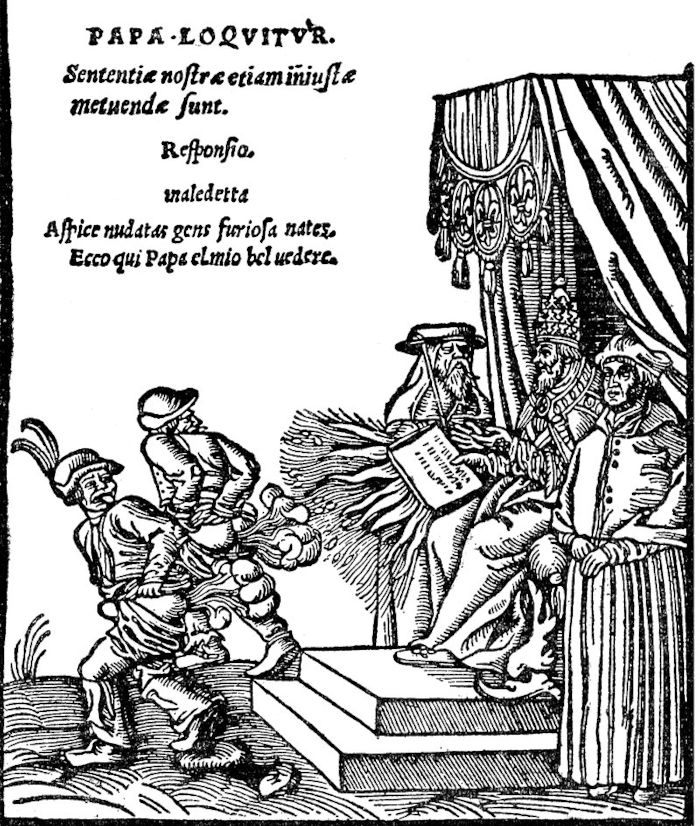
Identifying propaganda has always been a problem. The main difficulties have involved differentiating propaganda from other types of persuasion, and avoiding a biased approach. Richard Alan Nelson provides a definition of the term:
“Propaganda is neutrally defined as a systematic form of purposeful persuasion that attempts to influence the emotions, attitudes, opinions, and actions of specified target audiences for ideological, political or commercial purposes through the controlled transmission of one-sided messages (which may or may not be factual) via mass and direct media channels.”.
Propaganda can often be recognised by the rhetorical strategies used in its design. In the 1930s, the Institute for Propaganda Analysis identified a variety of propaganda techniques that were commonly used in newspapers and on the radio, which were the mass media of the time period. Propaganda techniques include "name calling" (using derogatory labels), "bandwagon" (expressing the social appeal of a message), or "glittering generalities" (using positive but imprecise language). The propagandist seeks to change the way people understand an issue or situation for the purpose of changing their actions and expectations in ways that are desirable to the interest group.
“Sociologist Jeffrey K. Hadden has argued that members of the anti-cult movement and Christian counter-cult movement accuse the leaders of what they consider cults of using propaganda extensively to recruit followers and keep them.”.
Propaganda, in this sense, serves as a corollary to censorship in which the same purpose is achieved, not by filling people's minds with approved information, but by preventing people from being confronted with opposing points of view. What sets propaganda apart from other forms of advocacy is the willingness of the propagandist to change people's understanding through deception and confusion rather than persuasion and understanding. The leaders of an organization know the information to be one sided or untrue, but this may not be true for the rank and file members who help to disseminate the propaganda.
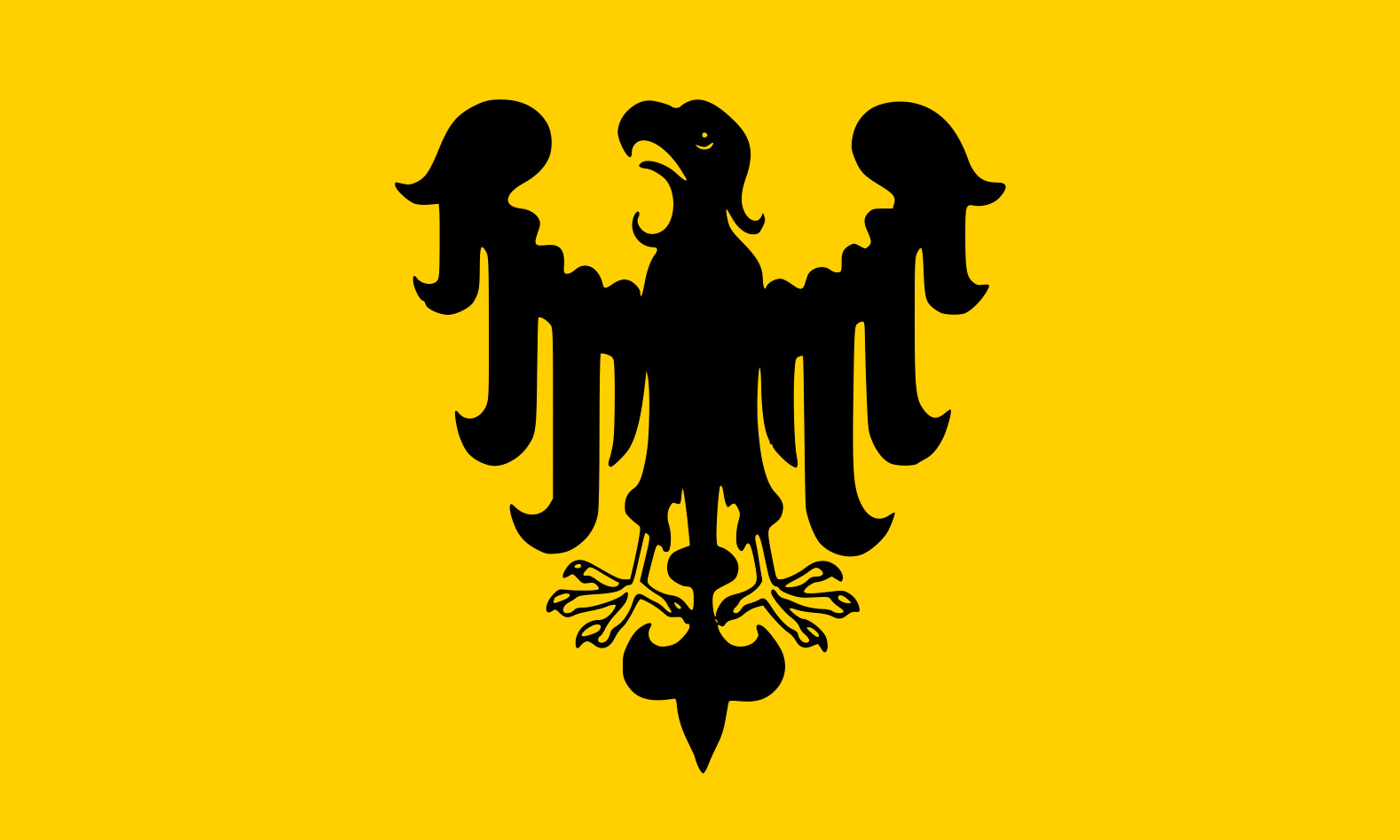
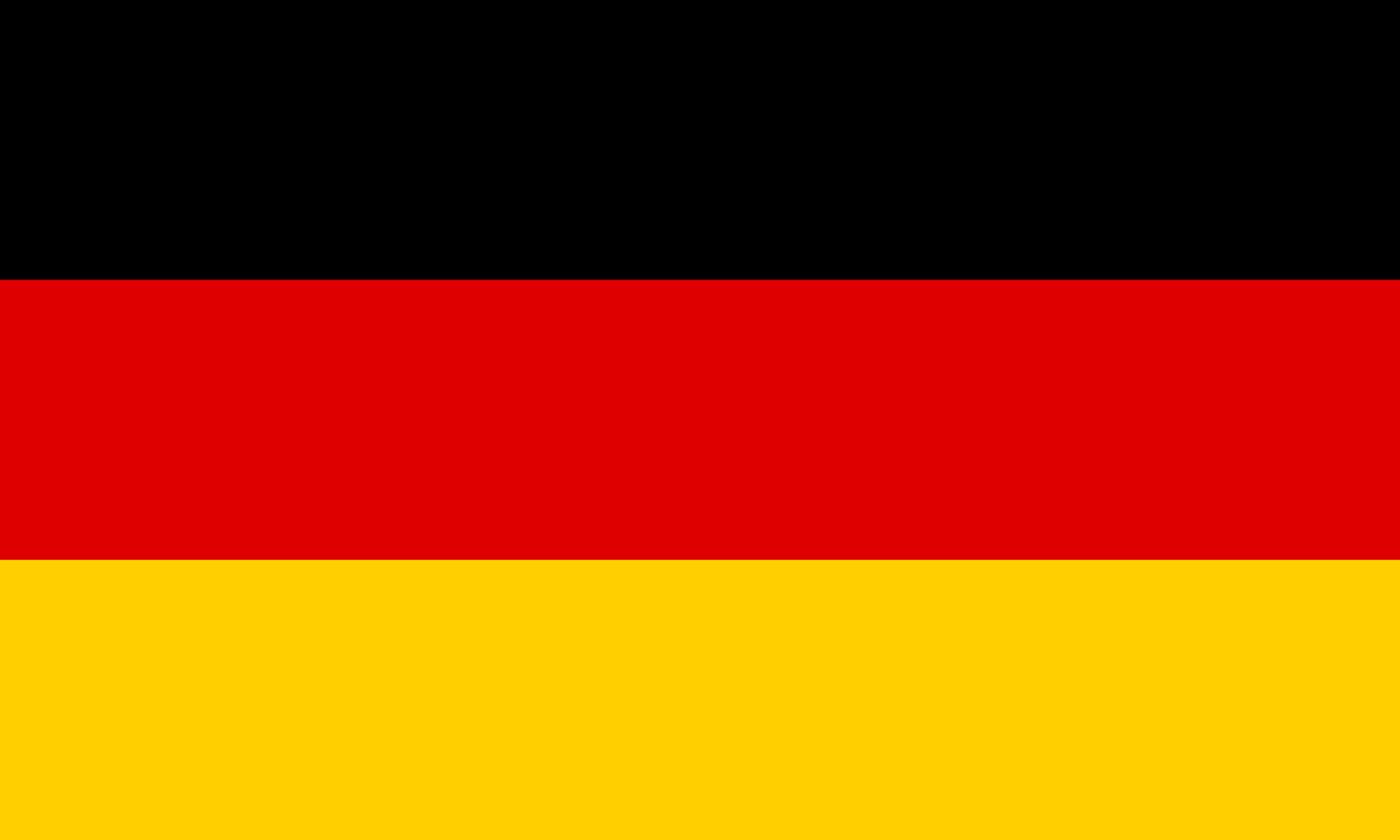
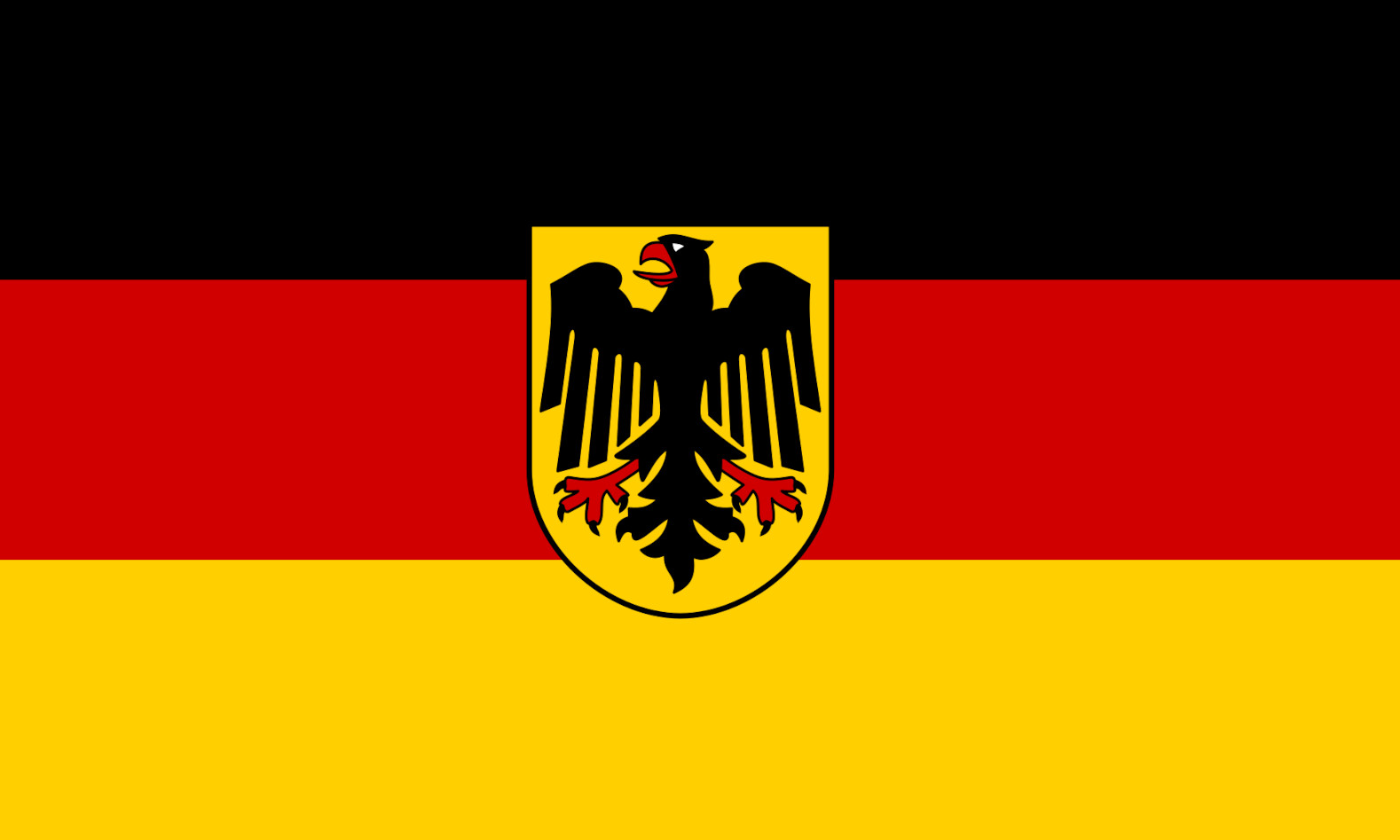
The German Corpse Factory or Kadaververwertungsanstalt (literally "Carcass-Utilisation Factory"), also sometimes called the "German Corpse-Rendering Works" or "Tallow Factory" was one of the most notorious anti-German atrocity propaganda stories circulated in World War I. According to the story, the Kadaververwertungsanstalt was a special installation supposedly operated by the Germans in which, because fats were so scarce in Germany due to the British naval blockade, German battlefield corpses were rendered down for fat, which was then used to manufacture nitroglycerine, candles, lubricants, and even boot dubbin.
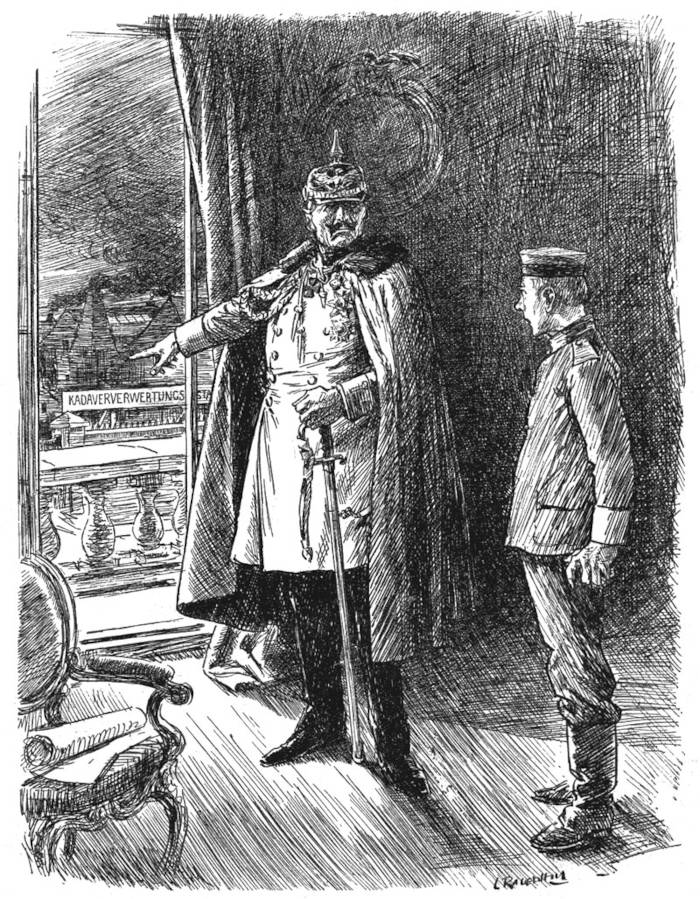
Historian Piers Brendon has called it "the most appalling atrocity story" of World War I, while journalist Phillip Knightley has called it "the most popular atrocity story of the war." After the war John Charteris, the British former Chief of Army Intelligence, allegedly stated in a speech that he had invented the story for propaganda purposes, with the principal aim of getting the Chinese to join the war against Germany. Recent scholars do not credit the claim that Charteris created the story. Propaganda historian Randal Marlin says "the real source for the story is to be found in the pages of the Northcliffe press", referring to newspapers owned by Lord Northcliffe.
During June and July 1943, two prominent representatives of the Moscow-based “Jewish Anti-Fascist Committee” toured the United States and raised more than two million dollars for the Soviet war effort at a series of mass meetings. At each of these rallies, Soviet Jewish leader Solomon Mikhoels [served as chairman during World War II] showed the crowd a bar of soap that he said was made from Jewish corpses. After the war, the soap story was given important legitimacy at the main Nuremberg trial. L. N. Smirnov, Chief Counsellor of Justice for the USSR, declared to the Tribunal:
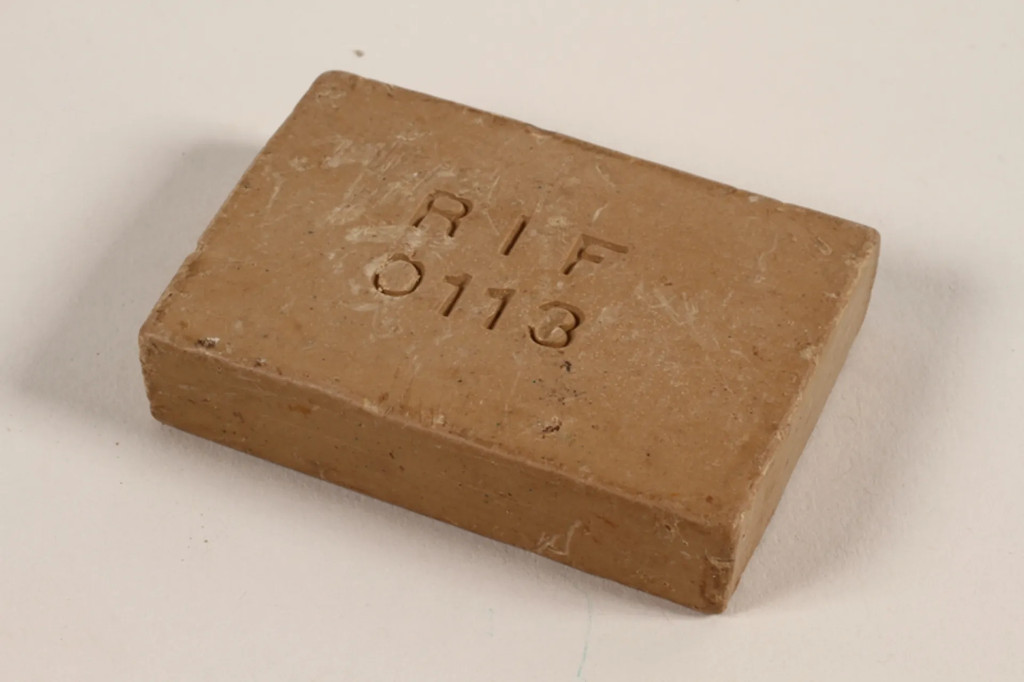
“The same base, rationalised SS technical minds which created gas chambers and murder vans, began devising such methods of complete annihilation of human bodies, which would not only conceal the traces of their crimes, but also to serve in the manufacturing of certain products. In the Danzig Anatomical Institute, semi-industrial experiments in the production of soap from human bodies and the tanning of human skin for industrial purposes were carried out.”.
It is worth emphasising here that the “evidence” presented at the Nuremberg Tribunal for the bogus soap story was no less substantial than the “evidence” presented for the claims of mass extermination in “gas chambers.”. After the war, supposed Holocaust victims were solemnly buried, in the form of soap bars, in Jewish cemeteries. In 1948, for example, four such bars wrapped in a funeral shroud were ceremoniously buried according to Jewish religious ritual at the Haifa cemetery in Israel.
The Yad Vashem Memorial stated that the Nazis did not produce soap with fat which was extracted from Jewish corpses on an industrial scale, saying that the Nazis may have frightened camp inmates by deliberately circulating rumors in which they claimed that they were able to extract fat from human corpses, turn it into soap, mass-produce and distribute it.
Other bars of “Jewish soap” has been displayed as grim Holocaust relics at the Jewish Historical Institute in Warsaw, the Stutthof Museum near Gdansk (Danzig), the Yivo Institute in New York, the Holocaust Museum in Philadelphia, the Jewish Holocaust Centre in Melbourne (Australia), and at various locations in Israel.
Introduction
Unlike the stigmatising holocaust industry, there are no expensive purchasable tickets to view the suppressed factualities written onto these very pages; the real cost it seems is the ignorant castigation of not only me but thousands of others before me who have freely published this invaluable information. In evaluated view of these efforts, I request that you decide for yourself by creating and substantiating a genuinely informed opinion from assessing factual evidence that is oh so not popular in most social circles where facts are scoffed at, rendered down with ridicule and eventually silenced unspeakable, suppressed under a repressive, anti-social construct of repressive tollerance.
“Ultimately and with this I conclude, our objective should be to create a society where denial of the genocide is seen as so outrageous, and so despicable that anyone who engages in it would be rendered a pariah”.
Deborah Lipstadt lawyer is Anthony Robert Julius, in 1999 Julius married Dina Rabinovitch, daughter of infamous anti-White Rabbi Nachum Eliezer Rabinovitch, Rabbi Rabinovitch said:
“The white women must cohabit with members of the dark races, white men with black women. Thus, the white race will disappear, for mixing the dark with white means the end of white man and our most dangerous enemy will become only a memory”.
People cannot seem to fathom after landing on the winning side of WW2 that allied and soviet propaganda during and after that WW2 could, just might, be false. Irrespecive of this questioning the Holocaust has become illegal in 17 countries including: Austria, Belgium, Czech Republic, France, Germany, Hungary, Israel, Liechtenstein, Lithuania, Luxembourg, Netherlands, Poland, Portugal, Romania, Russia, Slovakia, and Switzerland.
Upon the holocaust mememorial in the Hague the Germanic people have been demonised as the Amalek (blood lickers).
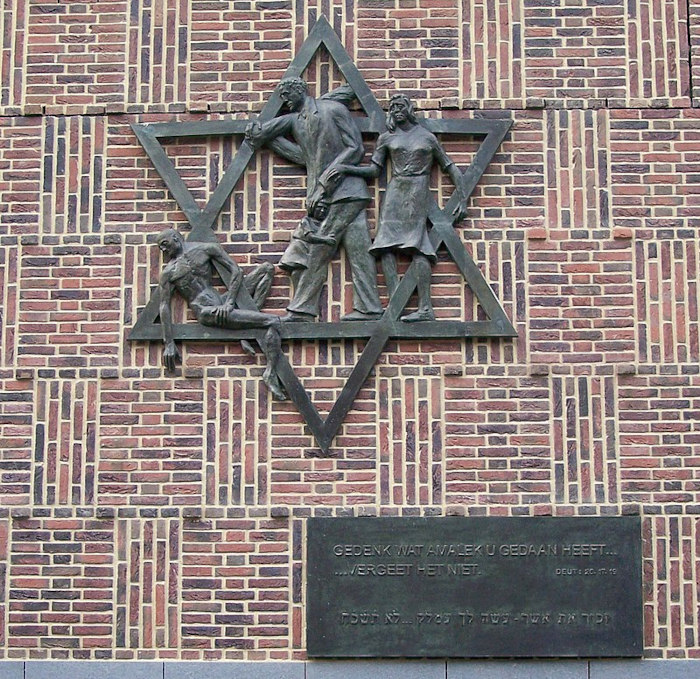
In Judaism, Amalekites came to represent the archetypal enemy of the Jews. In Jewish folklore, the Amalekites are considered to be the symbol of evil. Three of the 613 mitzvot (commandments) involve Amalek:
- 598 Deut. 25:17 – Remember what Amalek did to the Israelites.
- 599 Deut. 25:19 – Wipe out the descendants of Amalek.
- 600 Deut. 25:19 – Not to forget Amalek's atrocities and ambush on our journey from Egypt in the desert.
When you cannot question anything, through fear of being socially outcast, stigmatised or worse prosecuted and locked up; then you begin to ask why the petitioned authorities attempt to suppress and stifle those genuinely seeking to substantiate the truth in hindsight of this matter.
Fabrication
The first accusation against the Germans of the mass murder of Jews in war-time Europe was made by the Polish Jew Rafael Lemkin in his book Axis Rule in Occupied Europe, published in New York in 1943. Somewhat coincidentally, Lemkin was later to draw up the useless U.N. Genocide Convention [reserved for "designated" ethnic groups, meaning themselves], which seeks to outlaw “racialism”. His book claimed that the Nazis had destroyed millions of Jews, perhaps as many as six millions. This, by 1943, would have been remarkable indeed, since the action was allegedly started only in the summer of 1942. At such a rate, the entire world Jewish population would have been exterminated by 1945.
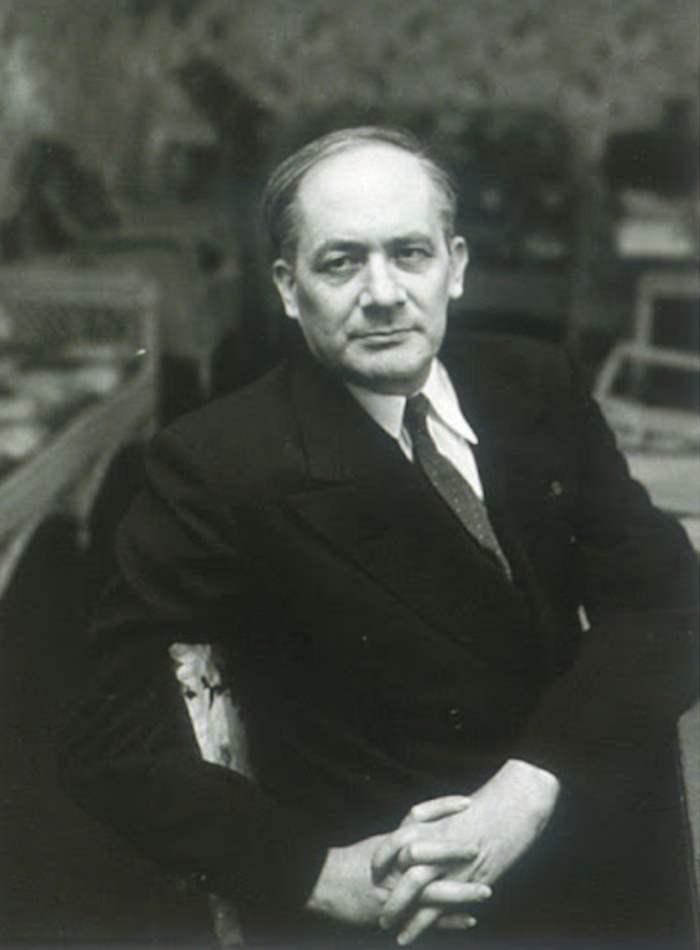
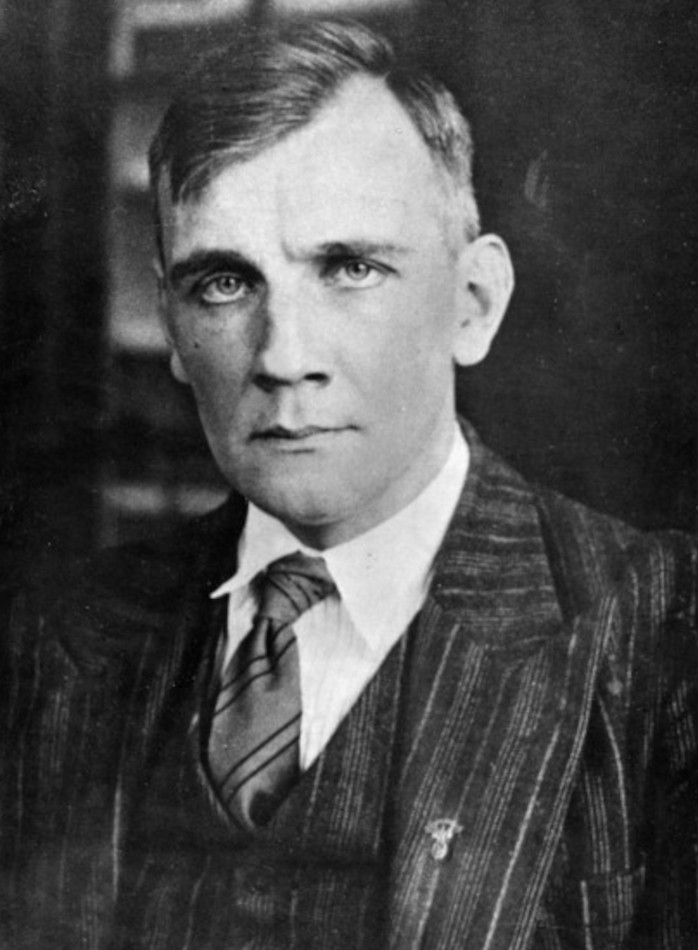
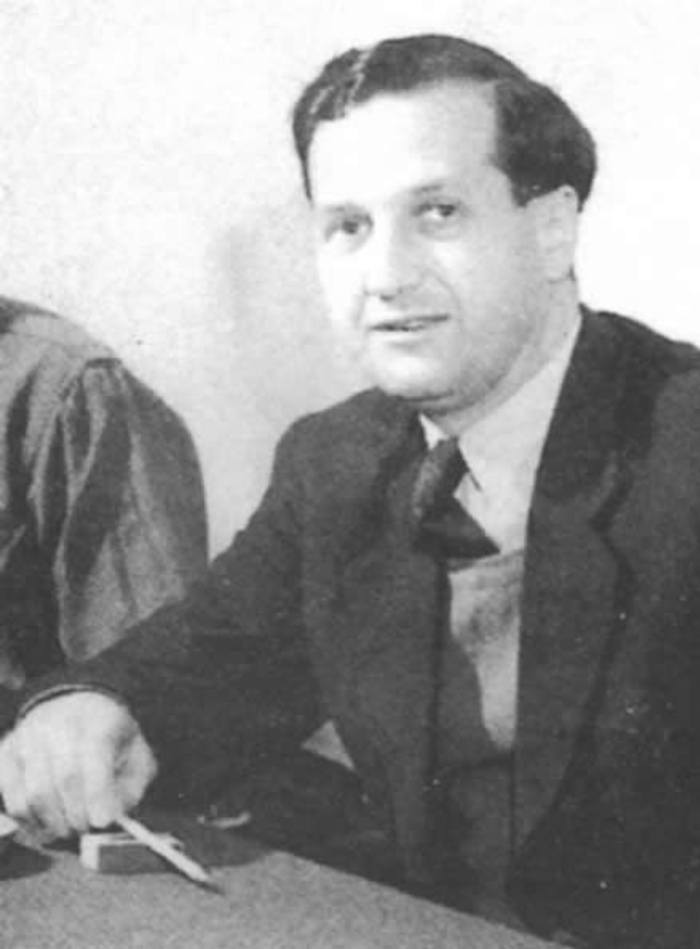
After the war, propaganda estimates spiralled to heights even more fantastic. Kurt Gerstein, an anti-Nazi who claimed to have infiltrated the S.S., told the French interrogator Raymond Cartier that he knew that no less than forty million concentration camp internees had been gassed. In his first signed memorandum of April 26th, 1945, he reduced the figure to 25 million, but even this was too bizarre for French Intelligence and in his second memorandum, signed at Rottweil on May 4th, 1945, he brought the figure closer to the six million preferred at the Nuremberg Trials. After his two “confessions” he hanged himself at Cherche Midi prison in Paris.
“Gerstein’s fantastic exaggerations have done little but discredit the whole notion of mass extermination. Indeed, Evangelical Bishop Wilhelm Dibelius of Berlin denounced his memoranda as “Untrustworthy”
Gerstein alleged that during the war he passed on information concerning the murder of Jews to the Swedish Government through a German baron but for some inexplicable reason his report was “filed away and forgotten”. He also claimed that in August, 1942 he informed the Papal nuncio in Berlin about the whole “extermination programme”, but the reverend person merely told him to “Get out.” The Gerstein statements abound with claims to have witnessed the most gigantic mass executions (twelve thousand in a single day at Belzec), while the second memorandum describes a visit by Hitler to a concentration camp in Poland on June 6th, 1942 which is known never to have taken place.
The story of six million Jews exterminated during the war was given final authority at the Nuremberg Trials by the statement of Dr. Wilhelm Hoettl. He had been an assistant of Eichmann’s, but was in fact a rather strange person in the service of American Intelligence who had written several books under the pseudonym of Walter Hagen. Hoettl also worked for Soviet espionage, collaborating with two Jewish emigrants from Vienna, Perger and Verber, who acted as U.S. officers during the preliminary inquiries of the Nuremberg Trials. It is remarkable that the testimony of this highly dubious person Hoettl is said to constitute the only “proof” regarding the murder of six million Jews.
It should be emphasised straight away that there is not a single document in existence which proves that the Germans intended to, or carried out, the deliberate murder of Jews. In Poliakov and Wulf’s Das Dritte Reich und die Juden: Dokumente und Aufsätze (Berlin, 1955), the most that they can assemble are statements extracted after the war from people like Hoettl, Ohlendorf and Wisliceny, the latter under torture in a Soviet prison. In the absence of any evidence, therefore, Poliakov is forced to write: “The three or four people chiefly involved in drawing up the plan for total extermination are dead, and no documents survive.” This seems very convenient.
The Germans had an extraordinary propensity for recording everything on paper in the most careful detail, yet among the thousands of captured documents of the S.D. and Gestapo, the records of the Reich Security Head Office, the files of Himmler’s headquarters and Hitler’s own war directives there is not a single order for the extermination of Jews or anyone else. It will be seen later that this has, in fact, been admitted by the World Centre of Contemporary Jewish Documentation at Tel-Aviv. Attempts to find “veiled allusions” to genocide in speeches like that of Himmler’s to his S.S. Obergruppenführers at Posen in 1943 are likewise quite hopeless.
Concentration Camps
From 1933 to 1945, it is claimed NSDAP Germany operated more than a thousand concentration camps (German: Konzentrationslager), including subcamps on its own territory and in parts of German-occupied Europe. Concentration camps are conventionally held to have been invented by the British during the Second Boer War.
Auschwitz-Birkenau
Mass concentration and internment of a Jewish instigated insurgency that formulated an attempted communist overthrow of a democratically elected National Socialist Germany. There is no doubt that thousands died at Auschwitz of a horrific disease named typhus that spread from inmate to inmate, carried by a bloodsucking, transient vector of parasitic body lice.
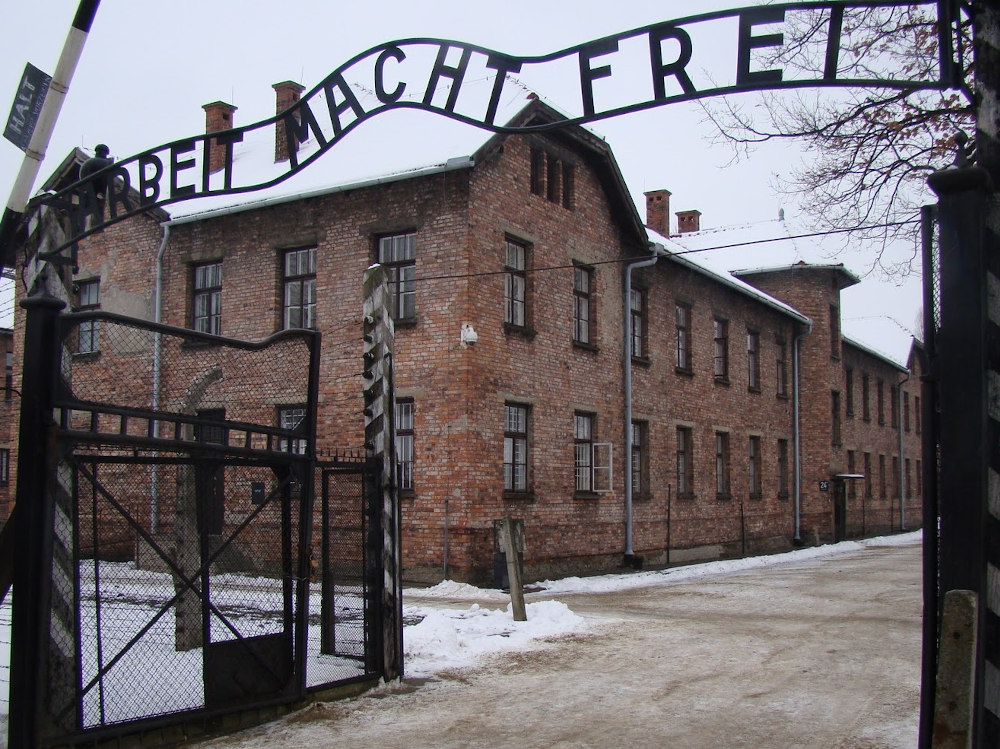
But despite nationalist grievances, there was and still is no actual scientific evidence to back up and corroborate the endless accusations of wilful mass murder as found at this now infamous WW2 internment camp? The gas chambers presented by the museum are a scientific impossibility, as is of burning thousands of bodies in cremation pits amidst the rising water table which caused outbreak after outbreak of deadly, virulent strains of waterborne typhus.
Aushwitz Propaganda Chimney
In 1947, the occupying Red Army i.e. Soviets built a fake chimney (for the specific purpose of propaganda) next to the Auschwitz I alleged “gas chamber” to make the building appear more convincing when viewing from the front. The red brick 30ft chimney is not even attached to the “gas chamber” building.
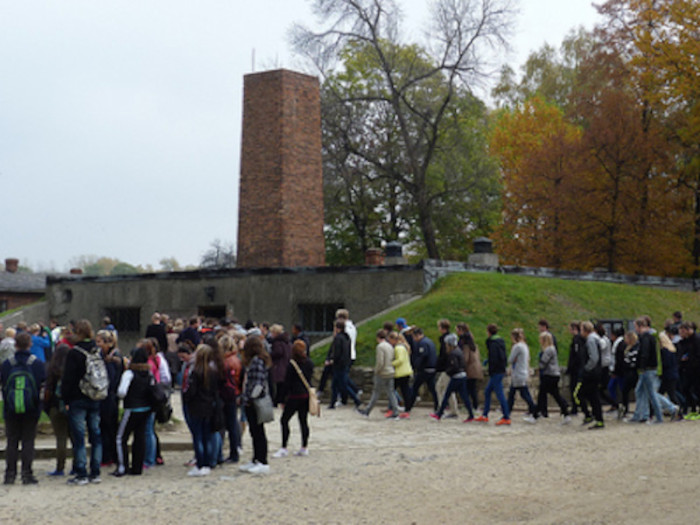
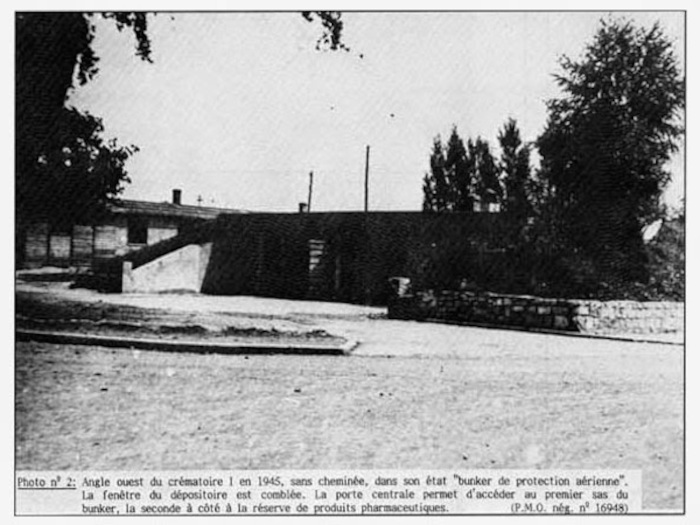
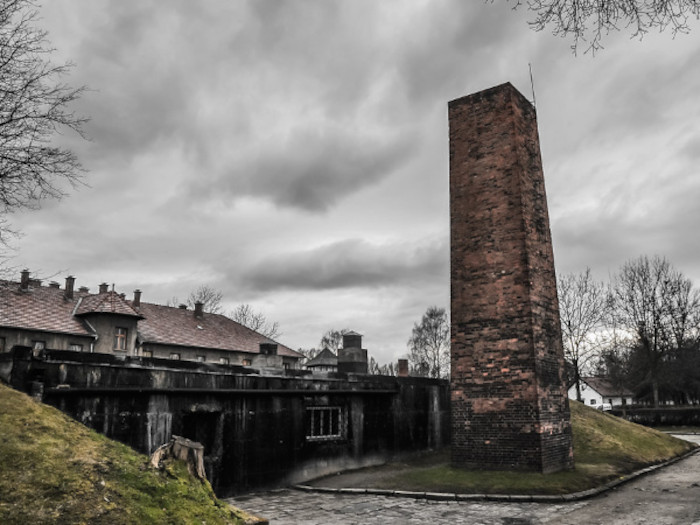

Inflated death toll
Franciszek Piper, former Head of Historical department of the Auschwitz Museum has through the mainstream media sources been credited with bringing the down Aushwitz official death toll (from his scientific analysis of the sources and findings on the deportations to Auschwitz) from four million to one and a half million; a somewhat significant reduction of almost three million deaths.
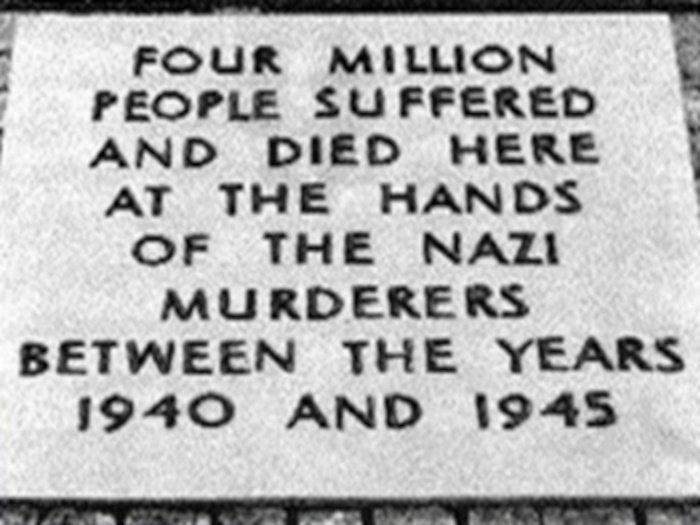
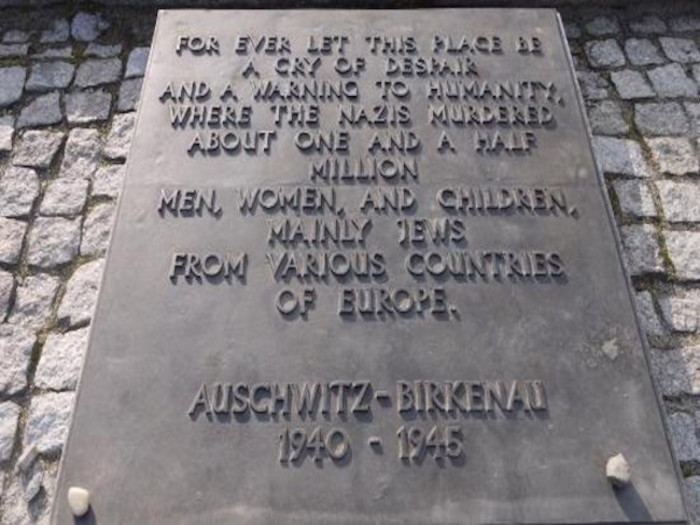
“In Crematory IV, 1,000 people were alleged to have been crowded into a room measuring 10 meters long, 4 meters wide and 1.6 meters high, and then homicidally gassed.”.
When Professor Piper findings are viewed in more detail we find that that out of this academic's assertion of a death toll total of 1.1 million 'Jewish' detainee deaths, about eighty-one per cent of Jews transported to Auschwitz by the Holocaust trains, or 890,000 men, women, and children, met their deaths immediately upon arrival and were “not registered”; however no forensic evidence to substantiate this allegation exists today.
“Of the 2.4 million Jews living in NAZI-occupied Europe, alas 6 million died. The good news? 5 million survived to claim compensation.”.
There is one survey of the Jewish question in Europe during World War Two and the conditions of Germany’s concentration camps which is almost unique in its honesty and objectivity, the three-volume Report of the International Committee of the Red Cross on its Activities during the Second World War, Geneva, 1948. This comprehensive account from an entirely neutral source incorporated and expanded the findings of two previous works: Documents sur I’activité du CICR en faveur des civils detenus dans les camps de concentration en Allemagne 1939–1945 (Geneva, 1946), and Inter Arma Caritas: the Work of the ICRC during the Second World War (Geneva, 1947).
One of the most important aspects of the Red Cross Report is that it clarifies the true cause of those deaths that undoubtedly occurred in the camps towards the end of the war. Says the Report: “In the chaotic condition of Germany after the invasion during the final months of the war, the camps received no food supplies at all and starvation claimed an increasing number of victims. Itself alarmed by this situation, the German Government at last informed the ICRC on February 1st, 1945. In March, 1945, discussions between the President of the ICRC and General of the S.S. Kaltenbrunner gave even more decisive results. Relief could henceforth be distributed by the ICRC, and one delegate was authorised to stay in each camp...” (Vol. III, p. 83). Clearly, the German authorities were at pains to relieve the dire situation as far as they were able.
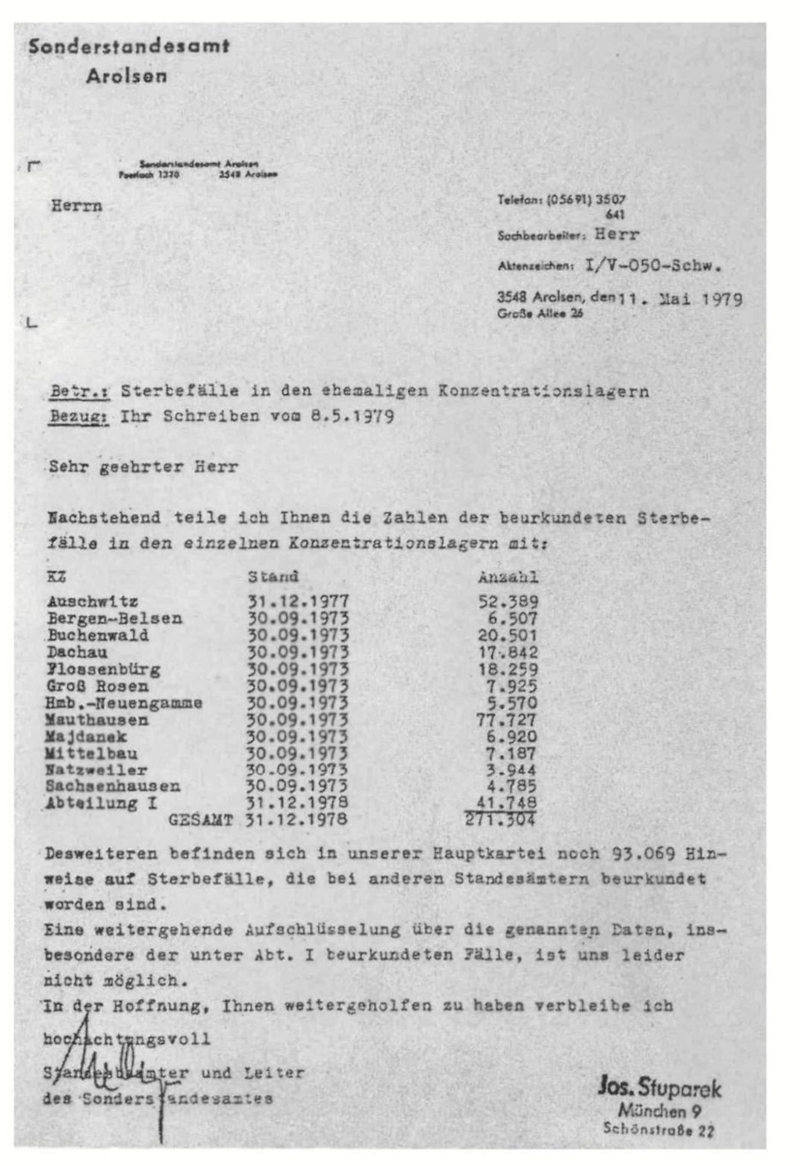
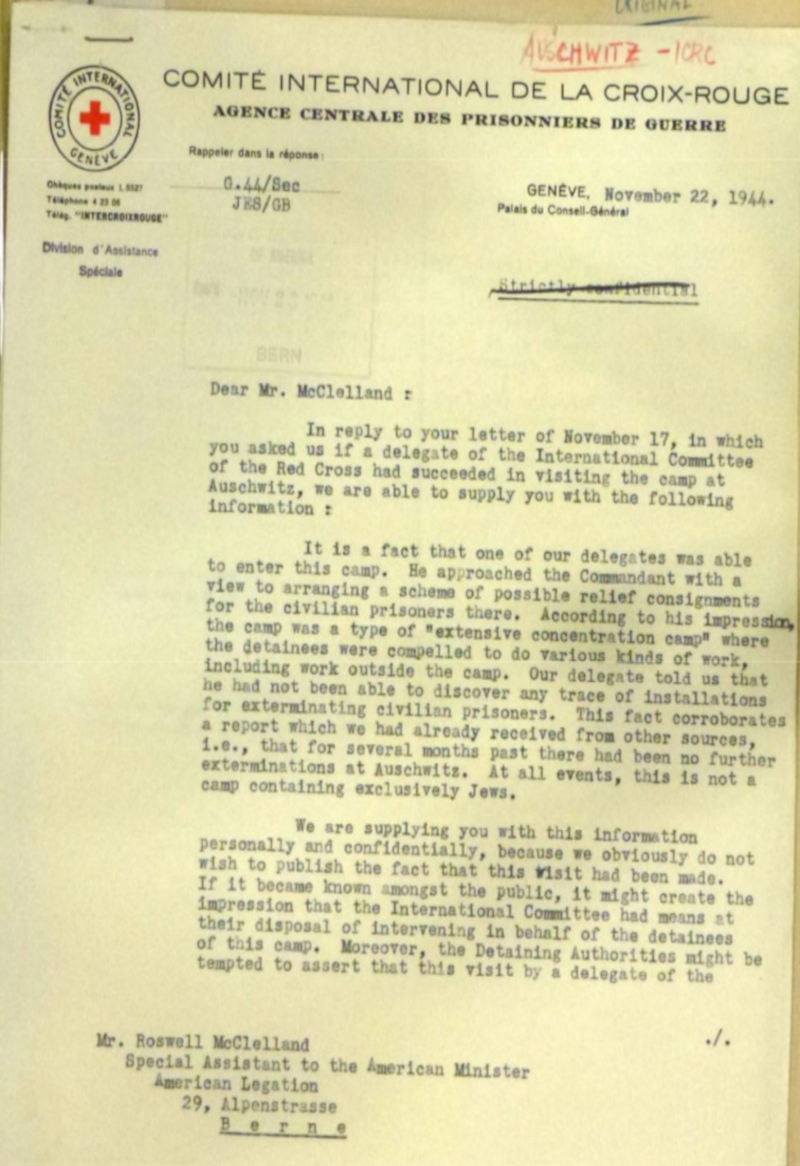
The Red Cross are quite explicit in stating that food supplies ceased at this time due to the Allied bombing of German transportation, and in the interests of interned Jews they had protested on March 15th, 1944 against “the barbarous aerial warfare of the Allies” (Inter Arma Caritas, p. 78). By October 2nd, 1944, the ICRC warned the German Foreign Office of the impending collapse of the German transportation system, declaring that starvation conditions for people throughout Germany were becoming inevitable. In dealing with this comprehensive, three-volume report, it is important to stress that the delegates of the International Red Cross found no evidence whatever at the camps in Axis-occupied Europe of a deliberate policy to exterminate the Jews. In all its 1,600 pages the report does not even mention such a thing as a gas chamber.
“Incidentally, it is frequently claimed that mass executions were carried out in gas chambers cunningly disguised as shower facilities. Again the Report makes nonsense of this allegation. “Not only the washing places, but installations for baths, showers and laundry were inspected by the delegates. They had often to take action to have fixtures made less primitive, and to get them repaired or enlarged” (Vol. III, p. 594).”.
It admits that Jews, like many other wartime nationalities, suffered rigours and privations, but its complete silence on the subject of planned extermination is ample refutation of the Six Million legend. Like the Vatican representatives with whom they worked, the Red Cross found itself unable to indulge in the irresponsible charges of genocide which had become the order of the day. So far as the genuine mortality rate is concerned, the Report points out that most of the Jewish doctors from the camps were being used to combat typhus on the eastern front, so that they were unavailable when the typhus epidemics of 1945 broke out in the camps (Vol. I, p. 204 ff).
Camp Commander: Rudolf Höss
Having been tortured, Rudolf Höss, who was the commander of Auschwitz from 1940 to 1943, almost certainly lied to save the lives of his wife and children. Even if torture and duress cannot be proven, the overwhelming reason for recognising the utter falsity of the Höss confession is that the gassing method he described was not scientifically plausible. Yet, Höss’s conviction has stood, by inference, as a testament to the cruelty of Germans in general, since he was tried at Nuremberg, in 1947, and subsequently hanged on April 16th, 1947, in Poland.
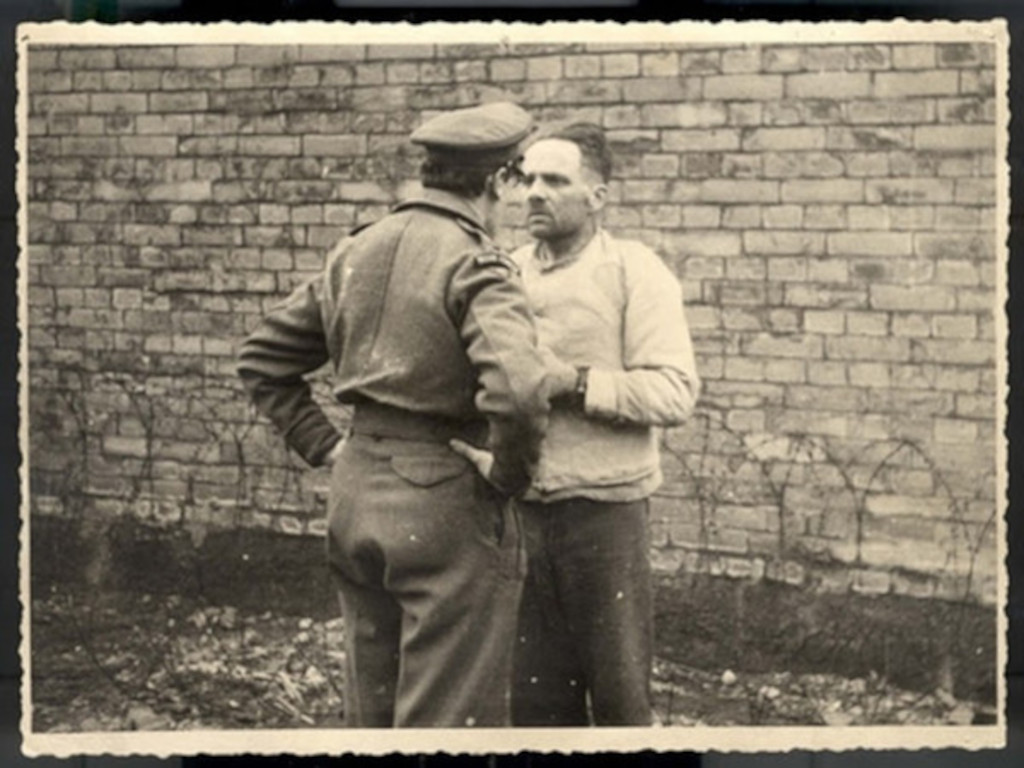
On March 11, 1946, the British took Höss into custody and immediately began questioning him. Höss signed a statement under oath in German (later given document number NO-1210 by the IMT) on March 14 (March 15?) at 2:30 in the morning. Two days later on March 16, Höss signed a statement under oath in English:
“I, personally, arranged on orders received from Himmler in May 1941 the gassing of two million persons between June/July 1941 and the end of 1943 during which time I was commandant of Auschwitz”.
Höss later signed an affidavit that was quoted extensively at the International Military Tribunal at Nuremberg. It was this affidavit that laid the foundation for and later validated the extermination story of Auschwitz. The affidavit, in English, dated April 5, 1946, read in part:
I, RUDOLF FRANZ FERDINAND HOESS, being first duly sworn, depose and say as follows: 2. I commanded Auschwitz until 1 December 1943, and estimate that at least 2,500,000 victims were executed and exterminated there by gassing and burning, and at least another half million succumbed to starvation and disease, making a total dead of about 3,000,000. This figure represents about 70% or 80% of all persons sent to Auschwitz as prisoners, the remainder having been selected and used for slave labour in the concentration camp industries. Included among the executed and burnt were approximately 20,000 Russian prisoners of war (previously screened out of Prisoner of War cages by the Gestapo) who were delivered to Auschwitz in Wehrmacht transports operated by regular Wehrmacht officers and men. The remainder of the total number of victims included about 100,000 German Jews, and great numbers of citizens, mostly Jewish, from Holland, France, Belgium, Poland, Hungary, Czechoslovakia, Greece, or other countries. We executed about 400,000 Hungarian Jews alone in the summer of 1944.

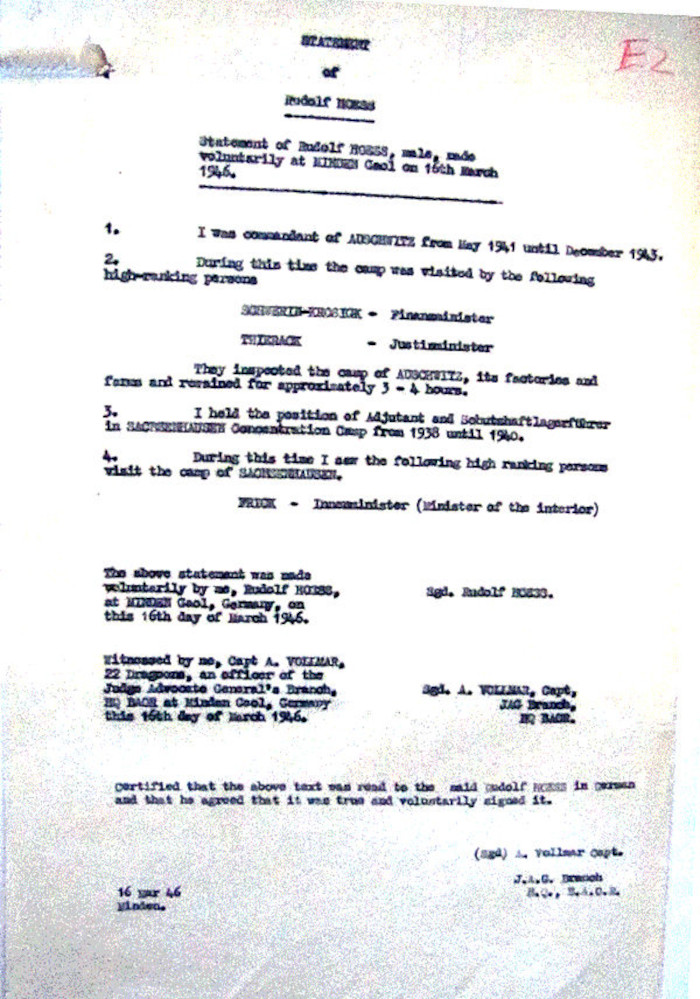
The Höss “confession” further alleges that Jews were already being exterminated by gas in the summer of 1941 at three other camps: Belzec, Treblinka and Wolzek. The “Wolzek” camp mentioned by Höss is a total invention. No such camp existed, and the name is no longer mentioned in Holocaust literature. Moreover, those who accept the Holocaust story currently claim that gassings of Jews did not begin at Auschwitz, Treblinka, or Belzec until sometime in 1942.
“I was treated terribly by the [British] Field Security Police. I was dragged to Heide and, of all places, to the same military barracks from which I had been released eight months before by the British. During the first interrogation, they beat me to obtain evidence. I do not know what was in the transcript, or what I said, even though I signed it because they gave me liquor and beat me with a whip. It was too much even for me to bear. The whip was my own. By chance, it had found its way into my wife's luggage. My horse had hardly ever been touched by it, much less the prisoners. Somehow, one of the interrogators probably thought that I had used it to constantly whip the prisoners. After a few days, I was taken to Minden on the Weser River, which was the main interrogation center in the British zone. There they treated me even more roughly, especially the first British prosecutor, who was a major. The conditions in the jail reflected the attitude of the first prosecutor. Surprisingly, after three weeks I was shaved, my hair was cut, and I was allowed to wash myself. My handcuffs had not been opened since my arrest.”.
On May 8, 1945, the Soviet “Extraordinary State Commission” issued its estimate that the number of victims at Auschwitz and Birkenau had been four million. The subsequent Polish Commission of investigation into the numbers of victims, which ran from 1945 to 1946, agreed with the Soviet report. In 1947, the Supreme National Tribunal in Poland condemned Höss in part for the deaths of between three and four million people. Later, Höss attempted to reduce his estimate of the Auschwitz death toll to 1.13 million, but it did him no good. On the basis of this verdict, Polish authorities executed Höss at Auschwitz. In 1991, Kazimierz Smolen, long-time director of the State Auschwitz Museum, declared, “In my view, no one can deny the number of 4 million.”.
For more than 30 years, Rudolf Höss has been the best witness to Auschwitz gassing claims. In many ways, the entire weight of claims of mass gassing rests on his testimony; with Höss removed from the chain of evidence, there is no link among various scattered documents and testimonies that combine to provide the “proof” of Nazi gassings.
Gas Chambers
Each year for decades, tens of thousands of visitors to Auschwitz have been shown an execution “gas chamber” in the main camp, supposedly in its “original state.” In January 1995, the prestigious French weekly magazine L'Express acknowledged that “everything” about this “gas chamber” is “false,” and that it is, in fact, a deceitful postwar reconstruction.
American execution technician Fred A. Leuchter (an expert on gas execution chambers) compiled a report titled “The Leuchter Report: An Engineering Report on the Alleged Execution Gas Chambers at Auschwitz, Birkenau, and Majdanek, Poland”. The investigation began in 1988 to investigate the feasibility of mass homicidal gassings, specifically at Auschwitz.
“It took from three to fifteen minutes to kill the people in the death chamber, depending upon climatic conditions. We knew when the people were dead because their screaming stopped. We usually waited about one half-hour before we opened the doors and removed the bodies. After the bodies were removed, our special commandos took off the rings and extracted the gold from the teeth of the corpses”.
Dr. William B. Lindsey, a research chemist employed for 33 years by the Dupont Corporation, likewise testified in a 1985 court case that the Auschwitz gassing story is technically impossible. Based on a careful on-site examination of the “gas chambers” at Auschwitz, Birkenau and Majdanek, and on his years of experience, he declared: “I have come to the conclusion that no one was wilfully or purposefully killed with Zyklon B [hydrocyanic acid gas] in this manner. I consider it absolutely impossible.”.
Even noted ‘Nazi hunter’ Simon Wiesenthal has acknowledged (in 1975 and again in 1993) that “there were no extermination camps on German soil“
‘French’Jew historian Olga Wormser-Migot likewise concluded in her detailed 1968 study of the German concentration camp system that the stories of execution gas chambers in Germany proper and Austria are mythical. Part of the reason for the persistence of baseless ‘gas chamber’ stories, she wrote, is confusion about the distinction between a gas chamber and a crematory. Another factor, perhaps more basic, is an ‘unconscious desire’ to keep alive the memory of the evil wartime treatment of the Jews. Psychologically, the ‘gas chamber’ has become one of the “leitmotifs of the heroic epic of the deportation“.
Mass Cremation
Cremation specialists have confirmed that thousands of corpses could not possibly have been cremated every day throughout the spring and summer of 1944 at Auschwitz, as has often been alleged. Ivan Lagacé, manager of a large crematory in Canada, testified in court in April 1988 that the Auschwitz cremation story is technically impossible. The allegation that 10,000 or even 20,000 corpses were burned every day at Auschwitz in the summer of 1944 in crematoriums and open pits is simply “preposterous” and “beyond the realm of reality,” he declared under oath.
Electrocuted and Vaporised
At one time, it was seriously claimed that at Auschwitz, Jews were systematically killed with electricity. American newspapers in February 1945, citing a Soviet eyewitness report from the recently-liberated camp, told readers that the methodical Germans had killed Jews there using an “electric conveyor belt on which hundreds of persons could be electrocuted simultaneously [and] then moved on into furnaces.
They were burned almost instantly, producing fertiliser for nearby cabbage fields.” And at the Nuremberg Tribunal, chief US prosecutor Robert Jackson charged that the Germans had used a “newly invented” device to instantaneously “vaporise” 20,000 Jews near Auschwitz “in such a way that there was no trace left of them.” No reputable historian now accepts either of these fanciful tales.
Tattoo Machines
Of all the multifarious “symbols of the holocaust” (and EVERYTHING about the holocaust is symbolic), probably no symbol is more powerful than the “holocaust tattoos” of the “holocaust survivors.” Wherever you find lying jews, you find “survivors;” wherever you find “survivors,” you find “holocaust tattoos.”
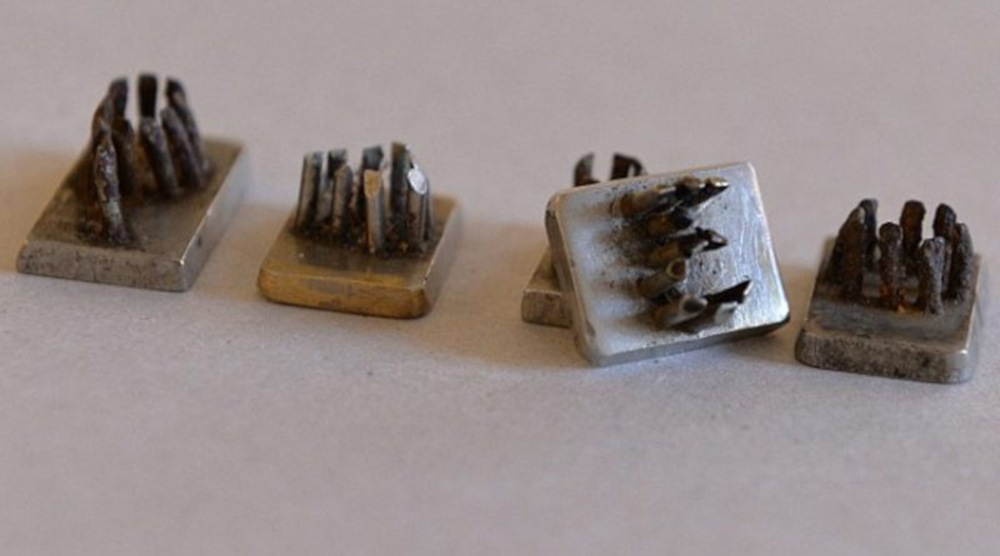
Excerpts from Edwin Black, IBM and the Holocaust: The Strategic Alliance between Nazi Germany and America’s Most Powerful Corporation; long description of the complexity of the registration number system, which allegedly included a reference to the inmate’s occupation, in case the Germans needed certain skills:
“In August 1943, a timber merchant from Bendzin, Poland, arrived at Auschwitz. He was among a group of 400 inmates, mostly jews. First, a doctor examined him briefly to determine his fitness for work. His physical information was noted on a medical record. Second, his full prisoner registration was completed with all personal details. Third his name was checked against the indices of the Political Section to see if he would be subjected to special punishment. Finally, he was registered in the Labor Assignment Office and assigned a characteristic five-digit IBM Hollerith number, 44673. The five-digit Hollerith number was part of a custom punch card system devised by IBM to track prisoners in NAZI concentration camps, including the slave labor at Auschwitz. The Polish timber merchant’s punch card number would follow him from labor assignment to labor assignment as Hollerith systems tracked him and his availability for work, and reported it to the central inmate file eventually kept at Department DII. Department DII of the SS Economics Administration in Oranienburg oversaw all camp salve labor assignments, utilising elaborate IBM systems. Later in the summer of 1943, the Polish timber merchant’s same five-digit Hollerith number, 44673, was tattooed on his forearm.”.
In other words, the alleged tattoo reference number was of such importance that the tattooing could not be entrusted to a mere inmate. In addition to which, the whole system could be frustrated by the inmates at any time, simply by re-tattooing each other and altering the numbers on the tattoos. The fact that tattoos can always be altered or covered would render any tattooing system useless for identification purposes. Since the holocaust tattoos we see are nearly always very crude, the alterations would be less noticeable, thus further defeating their alleged purpose.
You expect a tattoo to fade a bit, but this is very sloppy work, considering that the “tattoos” are alleged to have been of such crucial importance for identification and labour management purposes. Note as well that the location is not standardised: sometimes they appear on the inside of the arm, sometimes the outside. According to one yarn, the inmates were allowed to “choose” where they wanted their tattoos! Since any tattoo can be covered by another tattoo, the location must be absolutely standardised if the tattoo is to serve for the possible identification of escaped inmates: that way, any person with a tattoo in that location would be suspect. Failing to put the tattoo in the same place each time would render it even more useless than ever.
“The tattoos of the survivors have come to symbolise the utter brutality and of the concentration camps and the attempt of the NAZIS to dehumanise their victims. The tattoos are also a testament to the resilience of those who bear them. Yet despite the importance of the tattoos, as testament, symbol and historical artifact, little scholarship has been devoted to the subject. There exist virtually no official period documents relating to the practice; what we know stems from anecdotal evidence contained in camp records and the accounts of those who were at the camps.”.
In other words, there is no evidence that it ever happened, except for the tens of thousands of “survivors” displaying their “holocaust tattoos”, 55 years after the war. There are no documents, no tattooing equipment, nothing.
“As the number of prisoners brought to the expanding Auschwitz complex rose, so did the death rate. But if a corpse were separated from its uniform, identification was rendered all but impossible”.
If the Germans were busy murdering people by the millions, why the hell would they care about identifying them afterwards?
“After a month’s work the commission had singled out approximately 300 “fanatic communists”. [footnote 3: Danuta Czech, Auschwitz Chronicle 1939-1945, Henry Holt & Co., NY, 1990, p. 102]. Those designated as such were tattooed by means of a metal plate [!] with interchangeable needles attached to it [!] The plate was impressed into the flesh on the left side of their chests [!] and the dye was rubbed into the wound”.
Another source for this fantastic yarn is Tadeusz Iwaszko, La deportazione al campo e la registrazione dei prigionieri, in: “Auschwitz. Il campo nazista della morte” [“Deportation to the Camp and Registration of the Prisoners”, in: “Auschwitz: The Nazi Death Camp”, by F. Piper and T. Swiebocka, Auschwitz-Birkenau State Museum Publications, 1997, p. 54. The most amusing part (about how the machine proved “impractical” – like the height-measuring head-shot contraptions and other bizarre contraptions described by “survivors”) is usually deleted. Actually the whole passage is more or less a quotation from the “affidavit” of Tadeusz Iwaszko, naturally prepared following the Communist takeover of Poland. Remember, these are the same people who gave us the “quicklime trains”, “electrical chambers at Belzec” and the “steam chambers” and “vacuum chambers” at Treblinka. According to “Tadeusz Iwaszko” (whoever he was), the “interchangeable needles” were 1 cm long, 10 times the depth of an ordinary tattoo. In addition to causing a puncture wound, this would cause the ink to migrate beyond the intended location, blurring the tattoo, and, to some extent, defeating its intended purpose – legibility. Iwaszko’s affidavit reads, in part, as follows:
“A special metal stamp was employed, upon which the interchangeable figures were fixed, made up of needles approximately 1 cm long. By means of a heavy pressure of the stamp on the upper left part of the trunk, a tattoo of the entire number was obtained in one single motion by means of the intermixture of ink into the wound in the form of the numbers caused in this manner… [Deletion] Since use of the metal stamp proved rather impractical…”.
In other words, the Germans are alleged to have used a sort of stencil formed of needles, which could then be transformed at will into a stencil for any other number. The “metal plate” would probably require at least one hundred needles (see below) as well as an extremely complex mechanism permitting the formation of a different stencil for each five-digit number (i.e., needle 1 in position A1 would be moved laterally by a lever mechanism to position A9, for example), and so on for 100 needles, and, presumably, 100 levers (or perhaps it was computerized).
All to save a few minutes tattoo work with one needle! Where are the plans, designs, specification sheets, patents, order forms, manufacturing reports, provisional and final acceptance forms, delivery vouchers, inventory reports, etc. for this Rube Goldberg device? No such “metal plate” has ever been found. No documents relating to it have ever been found. No tattooing needles or other equipment has ever been found. In practice, such a “plate” would probably cause a puncture wound followed by anaerobic infection, in addition to infecting the entire camp with hepatitis, syphilis, staph infections, possible septicaemia and even gangrene. And if the “plate” was to be autoclaved after each inmate, how many thousands of “metal plates” would they need? Where did they all disappear to? Either the needles were interchanged in position only, or new needles were inserted from the back. Which is it?
Memorial and Museum
In 2019, 2,320,000 people visited the Auschwitz-Birkenau State Museum, including visitors from Poland (at least 396,000), United Kingdom (200,000), United States (120,000), Italy (104,000), Germany (73,000), Spain (70,000), France (67,000), Israel (59,000), Ireland (42,000), and Sweden (40,000). The first exhibition in the barracks opened in 1947. In Stalinist Poland, on the seventh anniversary of the first deportation of Polish captives to Auschwitz, the exhibition was revised with the assistance of former inmates. The exhibition was influenced by the Cold War and next to pictures of Jewish ghettos, photos of slums in the US were presented.

“Mr. Musk, the owner of X, the social media platform formerly known as Twitter, stirred outrage — and an exodus of advertisers — in November when he endorsed an antisemitic post on X as “the actual truth.” The post accused Jewish communities of pushing “hatred against whites” and supporting the immigration of “hordes of minorities.”. The White House denounced Mr. Musk for “abhorrent promotion of antisemitic and racist hate.” He quickly apologized for his intervention, saying “it might be literally the worst and dumbest post I’ve ever done.” But his atonement has come in fits and starts. After apologizing for giving a thumbs up to an antisemitic theory about Jews conspiring to dilute the white population.”. [..] He also threatened to take legal action against the Anti-Defamation League, a rights group that has complained about the rise in antisemitism on X.
In 1979, the newly elected Polish Pope John Paul II celebrated mass on the grounds of Auschwitz II to some 500,000 people, and announced that Edith Stein would be beatified; he called the camp a "Golgotha of our times". The 50th anniversary of the liberation ceremony was held in Auschwitz I in 1995. In 1996, Germany made January 27, the day of the liberation of Auschwitz, the official day for the commemoration of the victims of National Socialism. Countries that have also adopted similar memorial days include Denmark (Auschwitz Day), Italy (Memorial Day), and Poland (Memorial Day for the Victims of Nazism).
Treblinka
For six days in October 1999, an Australian team headed by Richard Krege, a qualified electronics engineer, carried out an examination of the soil at the site of the former Treblinka II camp in Poland, where, Holocaust historians say, more than half a million Jews were put to death in gas chambers and then buried in mass graves.
“Treblinka near Warsaw. The extermination camp for Jews. There was a chamber with moving knives, it was in a basement, under a banya. The bodies were cut into pieces and then burned. There were mountains of ashes, twenty to twenty-five metres high. In one place, Jews had been chased into a pond full of acid. Their screams were so terrible that local peasants abandoned their homes”.
According to the Encyclopedia of the Holocaust (1997), for example, “a total of 870,000 people” were killed and buried at Treblinka between July 1942 and April 1943. Then, between April and July 1943, the hundreds of thousands of corpses were allegedly dug up and burned in batches of 2,000 or 2,500 on large grids made of railway ties. Krege's team used an $80,000 Ground Penetration Radar (GPR) device, which sends out vertical radar signals that are visible on a computer monitor. GPR detects any large-scale disturbances in the soil structure to a normal effective depth of four or five meters, and sometimes up to ten meters. (GPR devices are routinely used around the world by geologists, archaeologists, and police.) In its Treblinka investigation, Krege's team also carried out visual soil inspections, and used an auger to take numerous soil core samples.
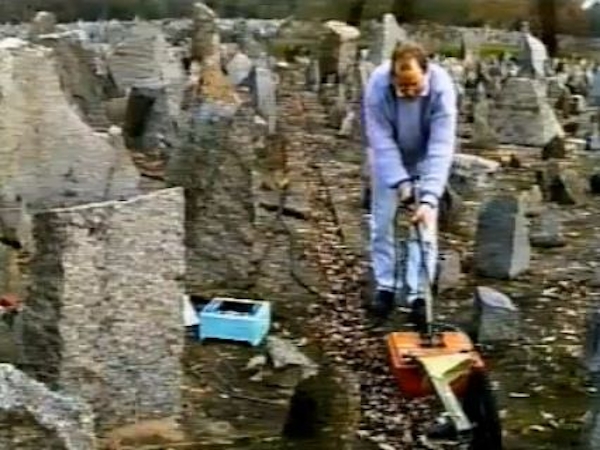
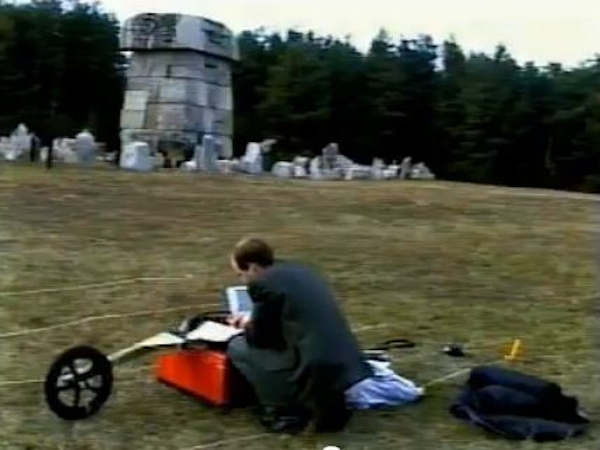
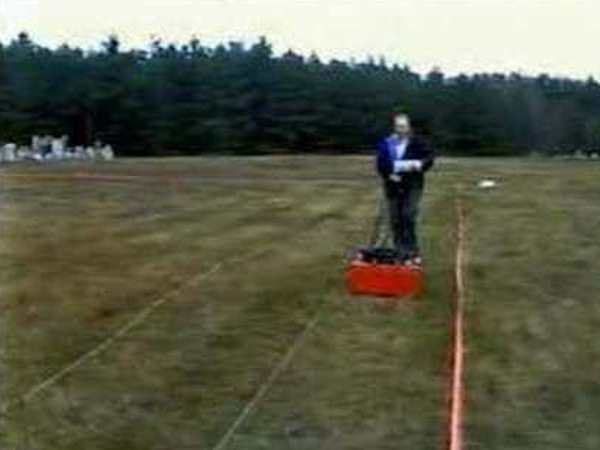
“From these scans we could clearly identify the largely undisturbed horizontal stratigraphic layering, better known as horizons, of the soil under the camp site, [..] We know from scans of grave sites, and other sites with known soil disturbances, such as quarries, when this natural layering is massively disrupted or missing altogether.”.
The team carefully examined the entire Treblinka II site, especially the alleged “mass graves” portion, and carried out control examinations of the surrounding area. They found no soil disturbance consistent with the burial of hundreds of thousands of bodies, or even evidence that the ground had ever been disturbed. In addition, Krege and his team found no evidence of individual graves, bone remains, human ashes, or wood ashes.
“Historians say that the bodies were exhumed and cremated toward the end of the Treblinka camp's use in 1943, but we found no indication that any mass graves ever existed,” he says. “Personally, I don't think there was an extermination camp there at all.”.
The study debunks Zionist British Archaeologist Caroline Sturdy-Colls’ fraudulent “investigation” of Treblinka, which included digging near clearly marked Christian graves claiming to find new “hidden mass graves,” falsely assigning homicidal intent to a normal life-saving (halt spread of typhus by removing body lice with water) shower room at Majdanek, and misidentifying a terra-cotta tile excavated at Treblinka as belonging to the floor of a homicidal “gas chamber.”
Krege and his team are associated with, and funded by, the Adelaide Institute. The institute's director, Dr. Fredrick Töben, was previously jailed in Germany for seven months in 1999 for disputing Holocaust extermination claims.
Dachau
One of the most prominent camps featured in the early years of Holocaust extermination campaign was Dachau. Dachau was opened March 23, 1933 (six years before World War II began), as one of the first camps established as part of the NSDAP concentration system. What Berben reveals about the actual living conditions in the camp refutes the "exerminationist" view of the camp. He writes (p.4), for example:
“The cleanliness of the cook-house caused visitors from the Nazi Party, from Junker schools [training schools for future high-ranking officers] and the Army to remark that the treatment given to men classified as the "dregs of humanity" was much too good”.
Stories abounded about the many thousands who were exterminated there in the gas chambers. Members of a US congressional investigating committee stood inside the alleged gas chamber where so many died, and had their picture taken for the "folks" back home. The congressional commission noted that many prisoners in the camp "were suffering from typhus or tuberculosis," and that the camp crematory was incapable of handling the large number of victims.
The Number of Prisoners Who Died at Dachau and in Outlying ("Kommando") Satellite Camps,1940-1945:
| 1940 | 1941 | 1942 | 1943 | 1944 | 1945 | |
|---|---|---|---|---|---|---|
| January | - | 455 | 142 | 205 | 53 | 2,888 |
| Feburary | 17 | 393 | 104 | 221 | 101 | 3,997 |
| March | 86 | 321 | 66 | 139 | 362 | 3,668 |
| April | 101 | 227 | 79 | 112 | 144 | 2,625 |
| May | 87 | 322 | 98 | 83 | 84 | 2,226 |
| June | 54 | 219 | 84 | 55 | 78 | |
| July | 34 | 140 | 173 | 51 | 107 | |
| August | 119 | 104 | 454 | 40 | 225 | |
| September | 134 | 73 | 319 | 45 | 325 | |
| October | 171 | 88 | 207 | 57 | 403 | |
| November | 273 | 110 | 380 | 43 | 997 | |
| December | 439 | 124 | 364 | 49 | 1,915 | |
| Total | 1,515 | 2,575 | 2,470 | 1,100 | 4,794 | 15,384 |
The table above is taken from Dachau: 1933-45, The Official History by Paul Berben, p.281. Note that the Dachau deathrate fell slightly in 1942, and that by 1943 it had fallen to almost 50 percent. In 1943 the death rate was at an all time low. According to the standard "exterminationist" story, though, the German extermination program was in full swing at that time. In 1944, with the reappearance of typhus in the camp, deaths rose dramatically. Note that 66 percent of all deaths a Dachau took place during the final seven months. It should also be noted that during the winter months of 1942-43 another typhus outbreak also struck the camp. There is also an unusually high number of deaths in March 1944: Allied bombing of satellite "Kommando" camps resulted in the deaths of 223 prisoners. )see P.Berben, Dachau, p.95.
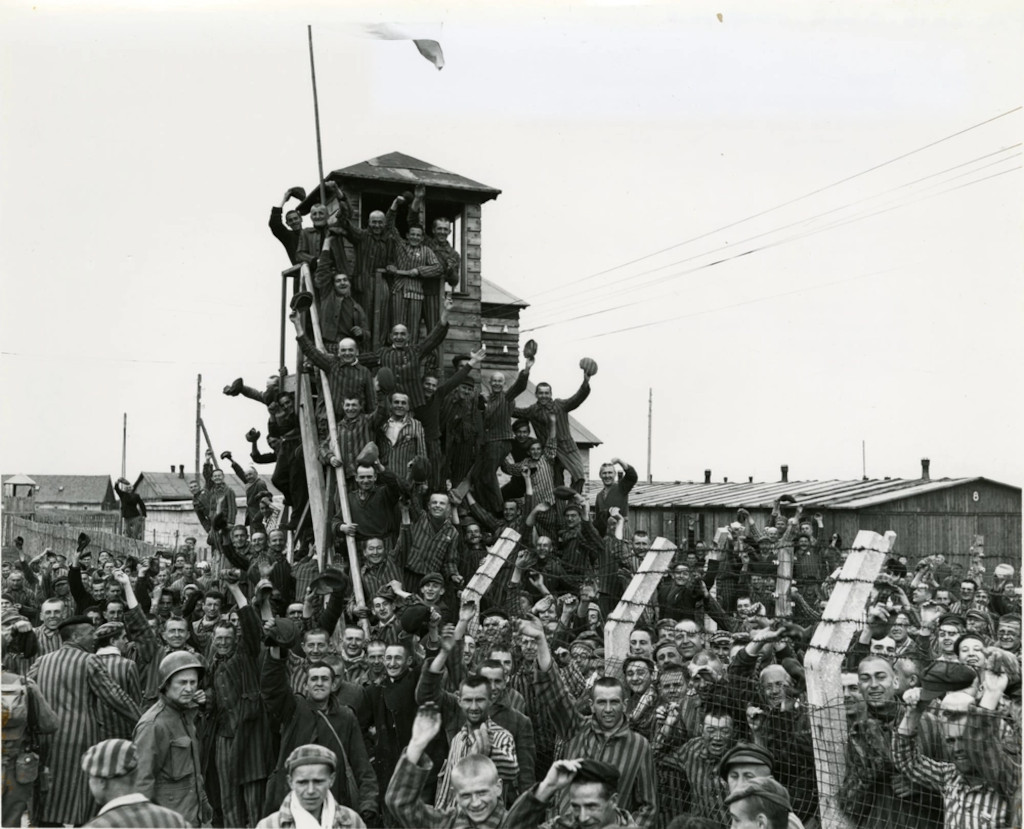
However the also stated that this was "due to executions" presumably in the previously mentioned gas chamber, The US Army released a photo of a disinfection chamber at the camp, and told the world that "Gas Chambers, conveniently located to the crematory, are examined by a soldier of the US Seventh Army. These chambers were used by Nazi guards for killing prisoners of the infamous Dachau concentration camp. By the early 1960s the "official" Holocaust historians had admitted that all such eyewitness testimony was wrong. No one was ever "gassed" at Dachau. Still, the belief that Dachau was a centre for the gassing of concentration camp prisoners has persisted.
“I was in Dachau for 17 months after the war, as a US War Department Attorney, and can state that there was no gas chamber at Dachau. What was shown to visitors and sightseers there, and erroneously described as a gas chamber, was a crematory. Nor was there a gas chamber in any of the other concentration camps in Germany. We were told that there was a gas chamber at Auschwitz, but since that was in the Russian zone of occupation, we were not permitted to investigate, since the Russians would not permit it. The old propaganda myth that millions of Jews were killed by the National Socialists. From what I was able to… determine during six years in Germany and Austria, there were a number of Jews killed, but the figure of a million was certainly never reached. I interviewed thousands of Jews, former inmates of concentration camps in Germany and Austria, and consider myself as well qualified as any man on this subject.”.
A case in point is the 1988 book by Princeton University history professor Arno Mayer, Why Did the Havens Not Darken?: The "Final Solution" in History,which downplays Auschwitz as a centre of gassing and admits that most deaths in the German wartime camps, including the so-called "death camps", were the result of "natural" causes, and not from gassing or executions. On April 26, 1945, a camp census show that 43,401 of the prisoners were there for political reasons. It seems unlikely that many of the political prisoners, especially the Communists, were advocates of individual rights. In light of the atrocities committed by Communists throughout Europe and Asia between 1917 and 1945 (and later), it is certainly naive at best, and a lie at worst, to paint these people as freedom fighters.
“Neither in Dachau, nor in Bergen-Belsen, nor in Buchenwald were jews or other prisoners gassed”.
The typhus epidemic that stuck Dachau was devastating, and in spite of all the efforts made by the camp's medical staff,it continued to spread. The winter of 1944-45 was particularly deadly. From November 1944 until June 1945 - and including the one month (May) when the Allies controlled the camp - a total of 18.296 prisoners died. This was 66 percent of the total number of deaths between 1940 and 1945, and most of these people died from disease. If one adds to this the deaths during the winter of 1943-44, when another major typhus outbreak hit the camp, the total number of victims rises to 19,605, or 70 percent of the total number of deaths during all the war years.
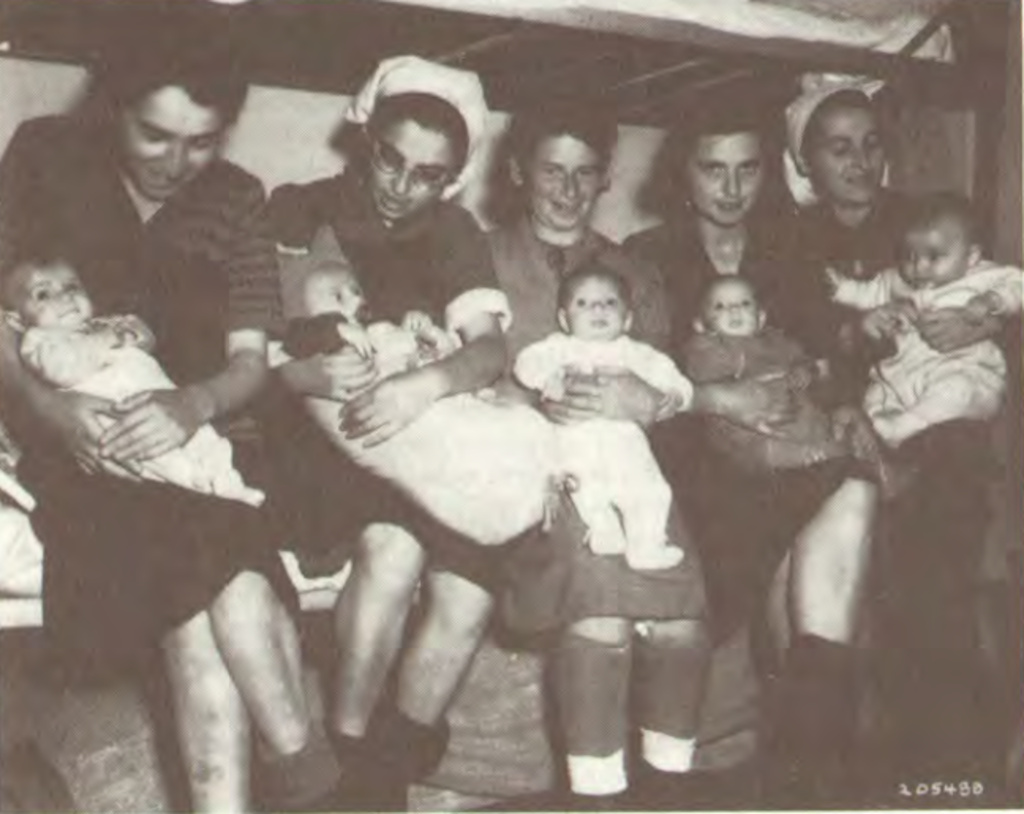
If the figures in Berbens official history of Dachau are correct just 8,234 of Dachau's remaining deaths could have perished as victims of "extermination". However, Berden makes quite clear that disease was a constant problem, and that many prisoners died throughout the year of such natural causes. He also points out that numerous individuals committed suicide, that some prisoners believed to be working for the German camp guards were murdered by fellow inmates, and that some were killed in Allied bombings. The category of natural death is important because quite a dew of Dachau's prisoners were elderly. "Statistics compiled by the camp administration office on February 16, 1945, list 2,309 men and 44 women aged between 50 and 60, and 545 men and 12 women over 60".
The above information about Dachau was sourced from Dachau: Reality and Myth by John Cobden.
Buchenwald
For a detailed historical account of Buchenwald read: Buchenwald: Legend and Reality
“Later, Mr Hubert was sent to Buchenwald “In the camp there was a cage with a bear and an eagle”. The bear would tear him apart and the eagle would pick at his bones.” “But that's unbelievable” whispered a visitor” “It is unbelievable” said Mr Hubert, “but it happened”.
Human Skin Lampshade and Handbag
After the extermination of National Socialist Germany, claims circulated that Ilse Koch, wife of the commandant of Buchenwald internment camp, not only had possessed lampshades made of human skin, but had specifically tattooed prisoners killed to use their skin for this purpose.
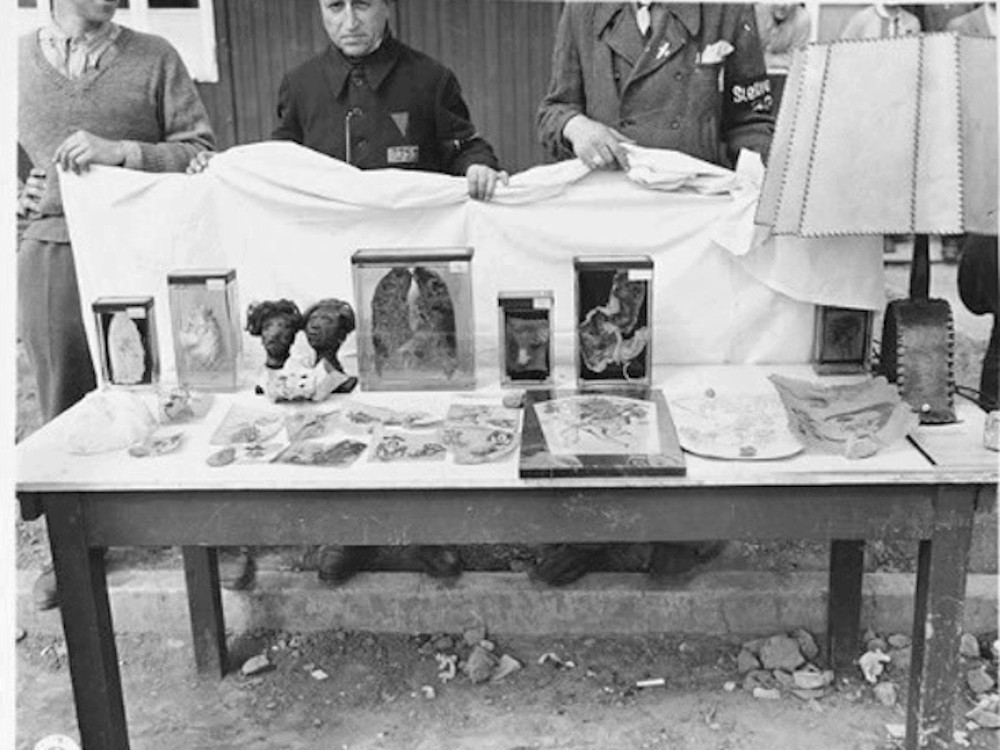
After her conviction for war crimes, General Lucius D. Clay, the interim military governor of the American Zone in Germany, reduced her sentence to four years' prison on the grounds “there was no convincing evidence that she had selected 'NAZI concentration' camp inmates for extermination in order to secure tattooed skins, or that she possessed any articles made of human skin”.


Jean Edward Smith in his biography, Lucius D. Clay, an American Life, reported that the general had maintained that the leather lamp shades were really made out of goat skin.
The book quotes a statement made by General Clay years later:
“There was absolutely no evidence in the trial transcript, other than she was a rather loathsome creature, that would support the death sentence. I suppose I received more abuse for that than for anything else I did in Germany. Some reporter had called her the “Bitch of Buchenwald”, had written that she had lamp shades made of human skin in her house. And that was introduced in court, where it was absolutely proven that the lamp shades were made out of goat skin.”.
False statements made under oath by Dr. Gustav Wegerer, Austrian, political prisoner, kapo of the infirmary, and Josef Ackermann, a political prisoner and secretary of the camp doctor Waldemar Hoven wrongfully alleged that…
- Wegerer explained: “One day at about the same time [1941] the camp commandant Koch and the SS doctor Müller appeared at my work command in the infirmary. At that time, a lampshade made of tanned, tattooed human skin was being prepared for Koch. Koch and Müller chose among the available tanned, parchment-thin human skins the ones with suitable tattoos, for the lampshade. From the conversation between the two, it became clear that the previously chosen motifs had not pleased Ilse Koch. The lampshade was then completed and handed over to Koch.” Dr. Hans Mueller, later SS physician in Obersalzberg, was a pathologist in Buchenwald from March 1941 to April 1942. The time period can be defined more precisely through Ackermann's statement.
- Ackermann delivered the lamp, as he testified in 1950 in court. The lamp-foot was made from a human foot and shinbone; on the shade one saw tattoos and even nipples. On the occasion of the birthday party of Koch [August 1941] he was tasked by the camp doctor Hoven to bring the lamp to the Kochs' villa. This he did. One of the party guests told him later that the presentation of the lamp had been a huge success. The lamp immediately disappeared after the SS leadership learned about it. Ilse Koch could not be accused of making the lampshade
Despite the allegations being proven false, a systematic echo, reverberation of these false allegations were directed and broadcast to subdued and suggestable nations throughout the last fifty years via a medium of popularised culture, most notably originating and projected via Jewish influenced and dominated entertainment industry.
- In a 1970 episode of the first series of Monty Python's Flying Circus sketch “Mr. Hitler and the Minehead by-election”, Adolf Hitler (played by John Cleese) says, “If he opens his big mouth again … it's lampshade time!”
- In 1965, Sylvia Plath referred to a “Nazi Lampshade” in her poem, “Lady Lazarus”. Plath invoked allusions and images from Nazi Germany to emphasise the speaker's sense of oppression.
- In the 1973 London Weekend Television drama The Death of Adolf Hitler, Doctor Karl Gebhardt (played by Ray McAnally) claims to Hitler (Frank Finlay) that the lampshade in his office in the Führerbunker is made of human skin. Hitler is disgusted and flies into a rage, violently throwing the lamp away, showing Hitler's cognitive dissonance between his personal morality and the twisted inhumanity of his orders.
- In 1979, the band Dead Kennedys made reference to the idea of Nazi human lampshades in their song California Über Alles, with the lyrics “you'd look nice as a drawstring lamp”.
- In 1995, August Kreis III was ejected from the set of The Jerry Springer Show after telling the host, “Your relatives — weren't they all turned into soap or lampshades?.. I've got your mom in the trunk of my car”.
- The song “Skinned” from the 1995 Blind Melon album Soup is about Ed Gein and contains the lyrics “I'll make a lampshade of durable skin.”
- A human lampshade appears in Ken Russell's 2007 short satire A Kitten for Hitler. In the film, Lenny, an American Jewish boy, who has a swastika-shaped birthmark, tries to soften Hitler's heart by giving him a kitten, but when Hitler sees the birthmark, he has Eva Braun kill Lenny to make him into a lampshade for their bedside table lamp. Near the end of the film, in what appears to be an act of God, the swastika transforms into the Star of David.
- In 2010 author Mark Jacobson published The Lampshade: A Holocaust Detective Story from Buchenwald to New Orleans. In it, he described how after Hurricane Katrina he uncovered a lamp which he believed to be made of human skin, and which may have come from a Nazi concentration camp. Initial flawed DNA testing appeared to show this was the case, but later more sophisticated testing proved it was cow skin.
- In 2012, a human-skin lamp appeared in the I Am Anne Frank episode of American Horror Story: Asylum.
Word became flesh
Edward Theodore “Ed” Gein was a killer and body snatcher, active in the 1950s, who made trophies from corpses he stole from a local graveyard. When he was finally arrested in November 1957, a search of the premises revealed, among other disturbing artefacts, a lampshade made out of human skin. Gein appears to have been influenced by the then-current stories about the Nazis collecting body parts in order to make lampshades and other items.
Jewish Soap
The propaganda of “Jewish soap” to place during and after WW2 to smokescreen the fact that no mass burial evidence of millions of bodies of alleged Holocaust victims was found anywhere within Germany's borders or even in WW2 German-controlled and occupied territories. I would find it bizarre that National Socialist Germans would want, let alone endeavour to turn Jews into soap bars in hindsight of suffering social engineered anti-White decimations and persecutions of Jewish instigated Communist uprising during the Weimar Republic, why the hell would they want to wash in or make clean an insurgency that they knew to be decimating filth, a scourge upon their homeland? Hitler initially wanted to deport Jews to Madagascar, among many other countries that refused to accept them. It seems Hitlers only other foreseeable option was to try to reeducate and reform (Arbeit macht frei) Jews through GULAG, an honest and meaningful, hard day's work.
Nevertheless, this accusation was “proved” at the main Nuremberg show trial of 1945-1946, and has been authoritatively endorsed by numerous historians in the decades since. In recent years, though, as part of a broad retreat from the most obviously untenable aspects of the “orthodox” extermination story, Holocaust historians have grudgingly conceded that the human soap tale is a wartime propaganda lie. In their retreat, though, these historians have tried to dismiss the soap story as a mere wartime “rumour,” neglecting to mention that international Jewish organisations and then Allied governments endorsed and sanctioned this libellous canard the soap story became an important feature of Jewish and Allied war propaganda. Rabbi Stephen S. Wise, wartime head of both the World Jewish Congress and the American Jewish Congress, publicly charged in November 1942 that Jewish corpses were being “processed into such war-vital commodities as soap, fats, and fertiliser” by the Germans. He further announced that the Germans were “even exhuming the dead for the value of the corpses,” and were paying fifty marks for each body.
“I have held in my hand a cake of soap stamped with the legend 'pure Jewish soap', prepared from the corpses of people who had been destroyed. But there is no need to speak of these things: thousands of books have been written about them.”.
During June and July 1943, two prominent representatives of the Moscow-based “Jewish Anti-Fascist Committee” toured the United States and raised more than two million dollars for the Soviet war effort at a series of mass meetings. At each of these rallies, Soviet Jewish leader Solomon Mikhoels showed the crowd a bar of soap that he said was made from Jewish corpses.
After the war, the soap story was given important legitimacy at the main Nuremberg trial. L. N. Smirnov, Chief Counsellor of Justice for the USSR, declared to the Tribunal:
“… The same base, rationalised SS technical minds which created gas chambers and murder vans, began devising such methods of complete annihilation of human bodies, which would not only conceal the traces of their crimes, but also to serve in the manufacturing of certain products. In the Danzig Anatomical Institute, semi-industrial experiments in the production of soap from human bodies and the tanning of human skin for industrial purposes were carried out.”.
It is worth emphasising here that the “evidence” presented at the Nuremberg Tribunal for the bogus soap story was no less substantial than the “evidence” presented for the claims of mass extermination in “gas chambers.”.
After the war, supposed Holocaust victims were solemnly buried, in the form of soap bars, in Jewish cemeteries. In 1948, for example, four such bars wrapped in a funeral shroud were ceremoniously buried according to Jewish religious ritual at the Haifa cemetery in Israel. Other bars of “Jewish soap” has been displayed as grim Holocaust relics at the Jewish Historical Institute in Warsaw, the Stutthof Museum near Gdansk (Danzig), the Yivo Institute in New York, the Holocaust Museum in Philadelphia, the Jewish Holocaust Centre in Melbourne (Australia), and at various locations in Israel.
Publications
Simon Wiesenthal’s Faked “Memoirs”
One of the world’s most famous holocaust “survivors” was the “Austrian” Jew, Simon Wiesenthal. He claimed to have been interned at the Mauthausen camp and, after the war, devoted his life to hunting ex-NAZIS. Wiesenthal had an organisation (which is still in existence), devoted to Jewish interests and promoting the Jewish mass extermination legend, named after him.
Yet, it is a little known fact that Wiesenthal’s own personal holocaust memoirs, entitled KZ Mauthausen, Bild und Wort (“Concentration Camp Mauthausen, Pictures and Words”), published in 1946, contains one of the most blatant forgeries of all holocaust memoirs.
Wiesenthal illustrated his book with drawings which he allegedly did either while in Mauthausen or from memory thereafter. One of the more famous pictures from his book is of three Jews, in their striped prisoner outfits, who had been shot at the stake by the NAZIS.
Although Wiesenthal alleged in his book that the drawing of the three shot Jews occurred in Mauthausen, the pictures were in reality plagiarised from a series of photographs which appeared in Life magazine of June 11, 1945. The series of photographs were of German soldiers, captured during the “Battle of the Bulge” wearing American uniforms, and executed by firing squad.
Wiesenthal copied his picture of “three shot Jews” from this Life photo essay, as can be seen in the illustrations below.
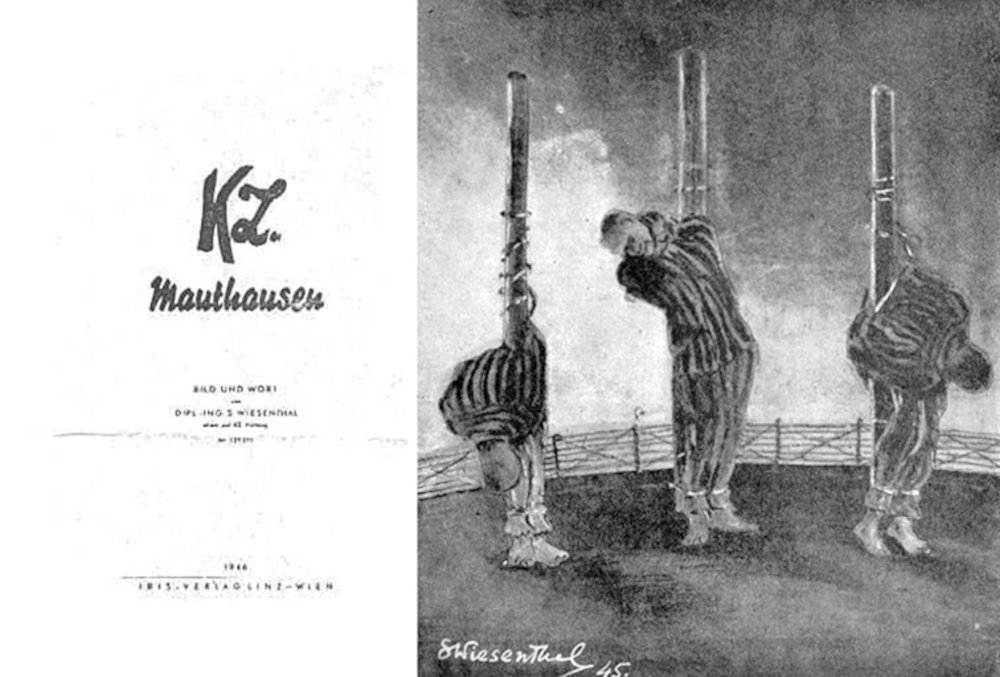
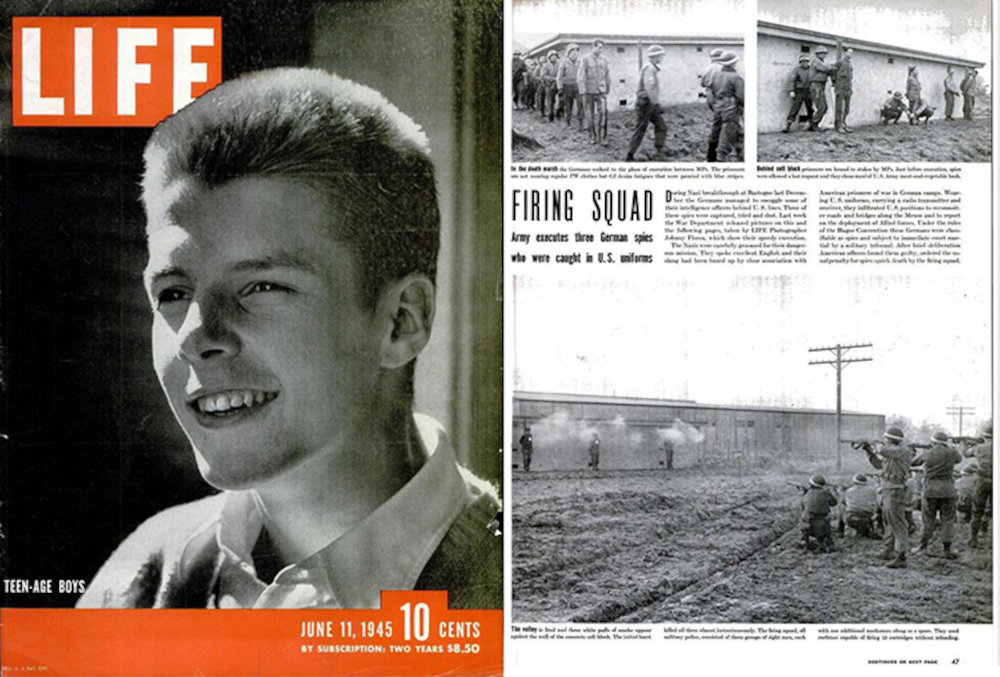


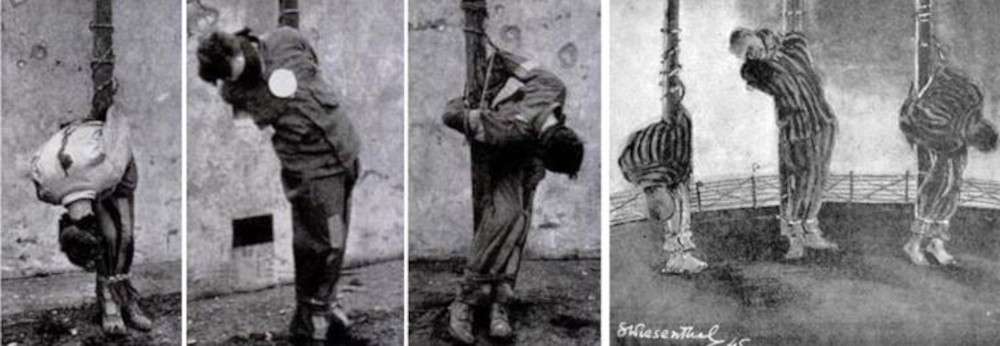
The Anne Frank Diaries
It is alleged that Anne Frank, a German / Dutch and Jewish thirteen-year-old during WW2 kept a diary of her life and times during the year of August 1942 through to 1944, she had received as a birthday present, and it is claimed she wrote detail statements in the diary regularly.
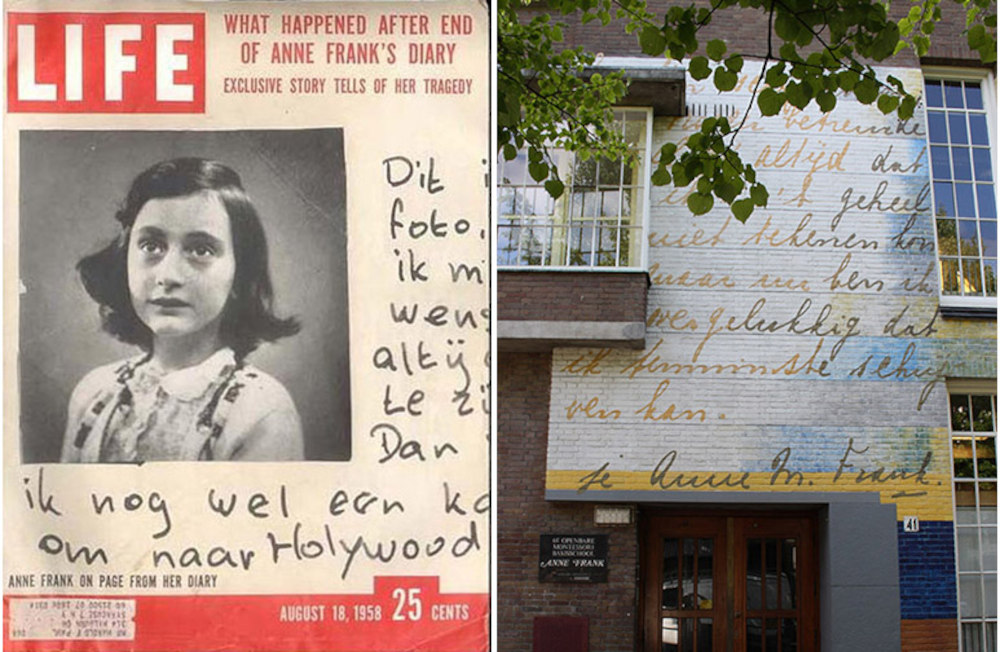
“The question of the authenticity of the diary is not considered important enough to examine here; I will only remark that I have looked it over and don't believe it. For example, already on page 2 one is reading an essay on why a 13-year-old girl would start a diary, and then page 3 gives a short history of the Frank family and then quickly reviews the specific anti-Jewish measures that followed the German occupation in 1940. The rest of the book is in the same historical spirit.”.
There has been much speculation as to both the authenticity and to the legibility of the diary, the first allegation alleged the diary as being written with a ball point pen (more commonly known as the Biro). Debuting at Gimbels department store in New York City on 29 October 1945 the Biro was a popular and commonly used product but did not fully enter into retail circulation until at least 1952 (long after the war had ended).
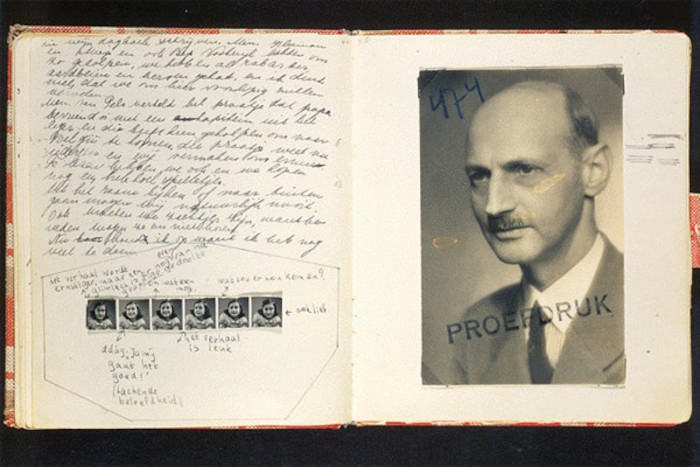
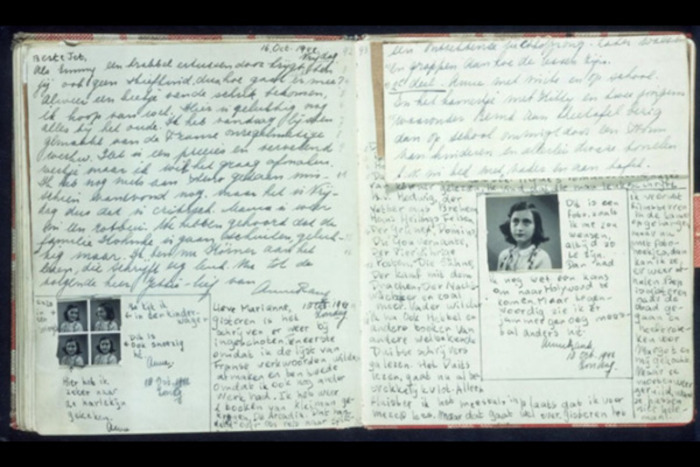
“The Diary of Anne Frank may be a fraud. It was sold as the actual diary of a young Jewish girl who died in a Nazi concentration camp after two years of abuse and horror. Any informed literary inspection of this book would have shown it could not possibly have been the work of a teenager.”.
The second allegation is that the diary was largely the inspirational work of her father, Otto Franks. When the diary copyright expired (extends only 70 years after the author’s death) in 2015 the Anne Frank Fonds (the foundation responsible for the diary) decided to try to extend copyright on the book by admitting that Otto Frank, who died in 1980, was indeed a “co-author” after all.
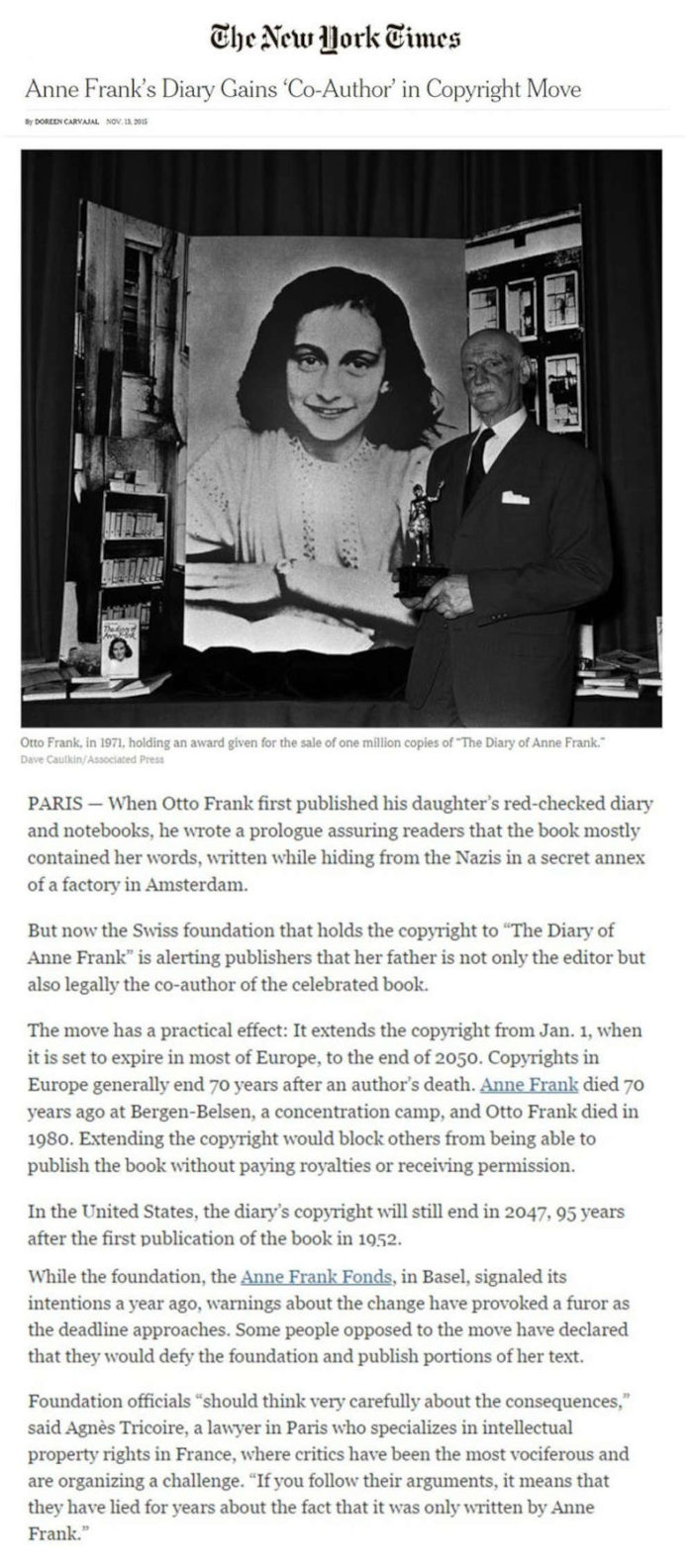
“Annelies Marie Frank never kept a diary. What she called her 'diary' was a collection of sketches, fictional stories and fantasy letters to the eight members of her imaginary “club.” In 1944, she rewrote the lot, calling it a novel (“een roman”), but this was translated in the Diary to “a romance.” Otto Frank lied when he insisted he had not intended to publish it. First published in 1998, this is the most rigorous debunking of the Anne Frank Diary ever published, and revised in 2001 to include some recent developments in this ongoing saga.”.
Propped up and beautified, the same as all the other fictitious Holohoax stories, there is an Anne Frank statue and a school named after her in Amsterdam and an Anne Franks Centre in New York. In 1999, Time named Anne Frank among the heroes and icons of the 20th century on their list of The Most Important People of the Century, stating: “With a diary kept in a secret attic, she braved the Nazis and lent a searing voice to the fight for human dignity”.
“I see no anti-Semitic implications in denial of the existence of gas chambers, or even denial of the Holocaust…I see no hint of anti-Semitic implications in [Robert] Faurisson's work”.
Over the years, several films about Anne Frank appeared. The diary has influenced a diverse group of artists and social commentators to make reference to her in literature, popular music, television, and other media.
